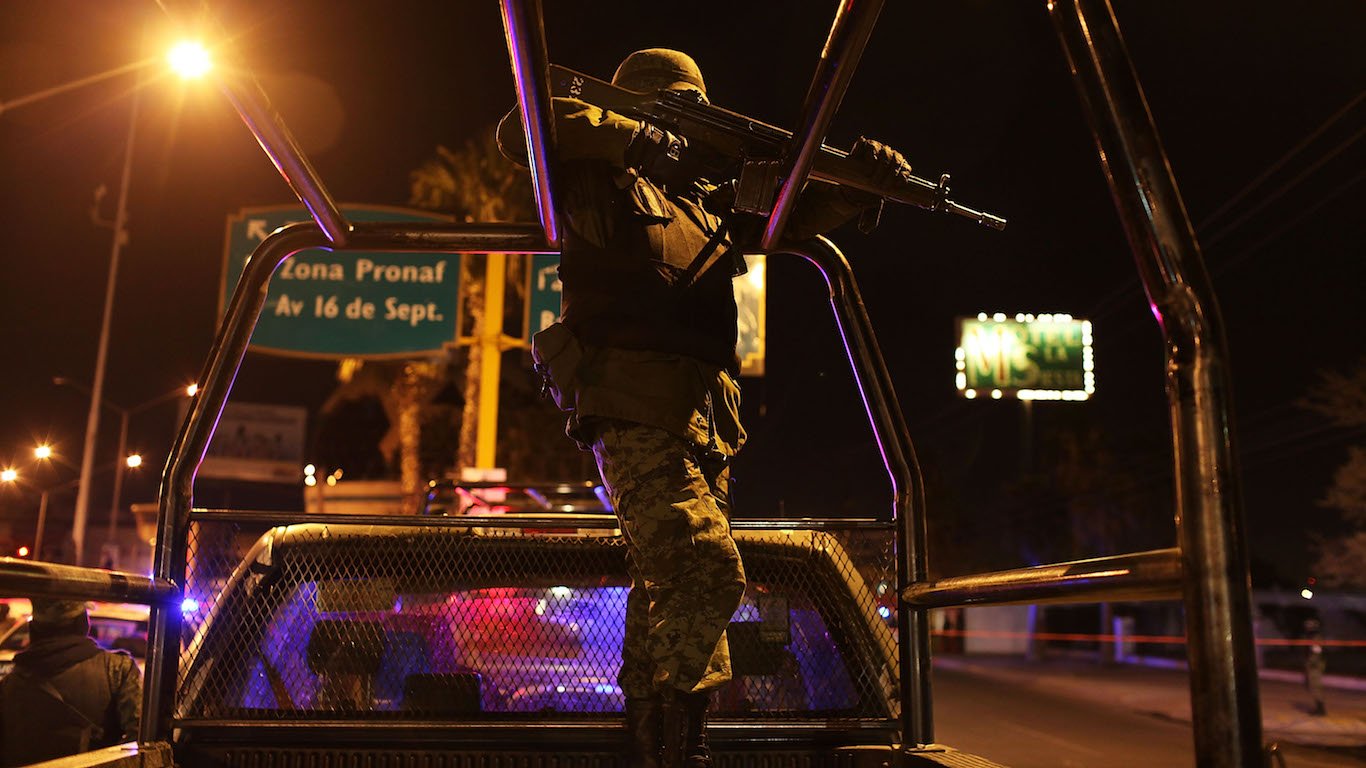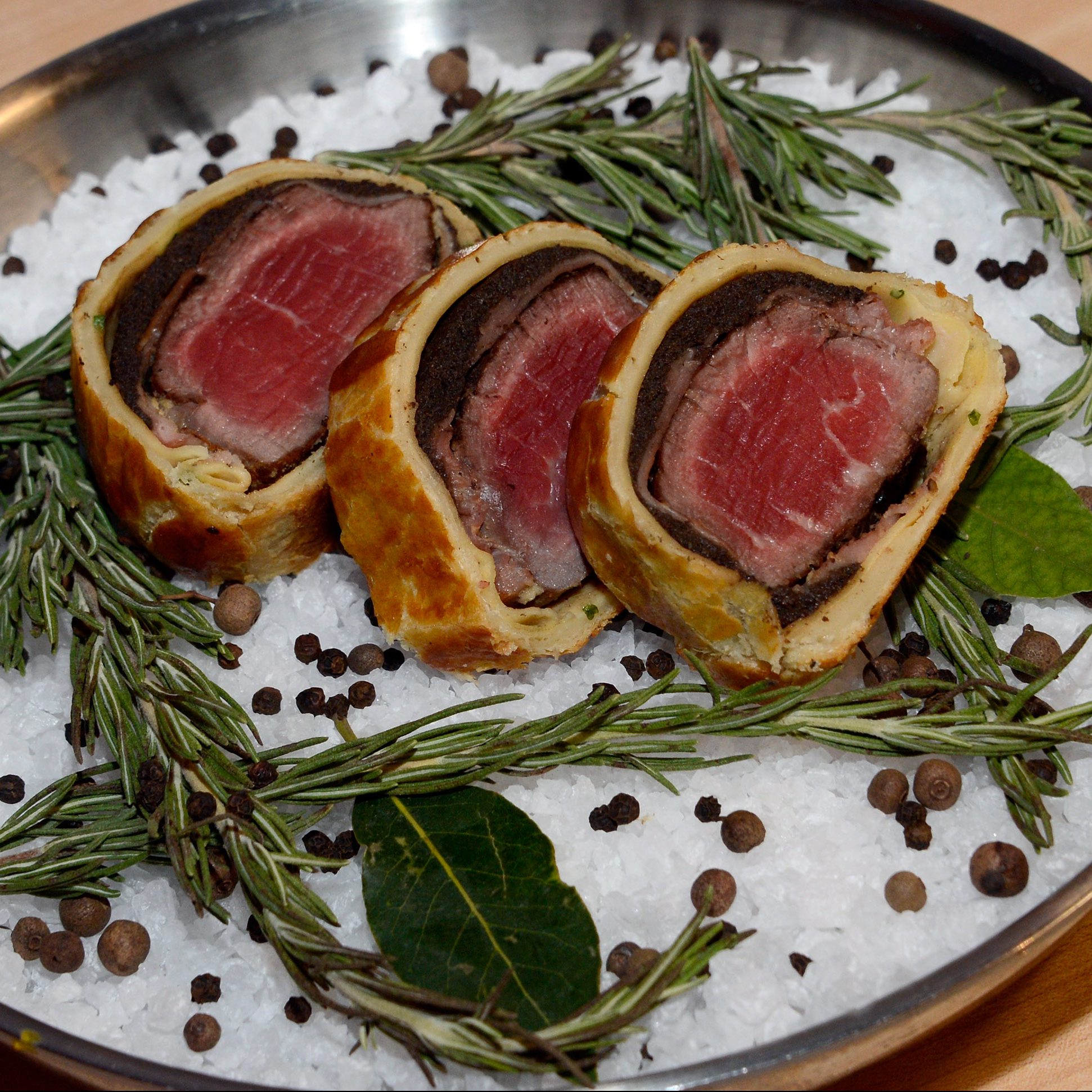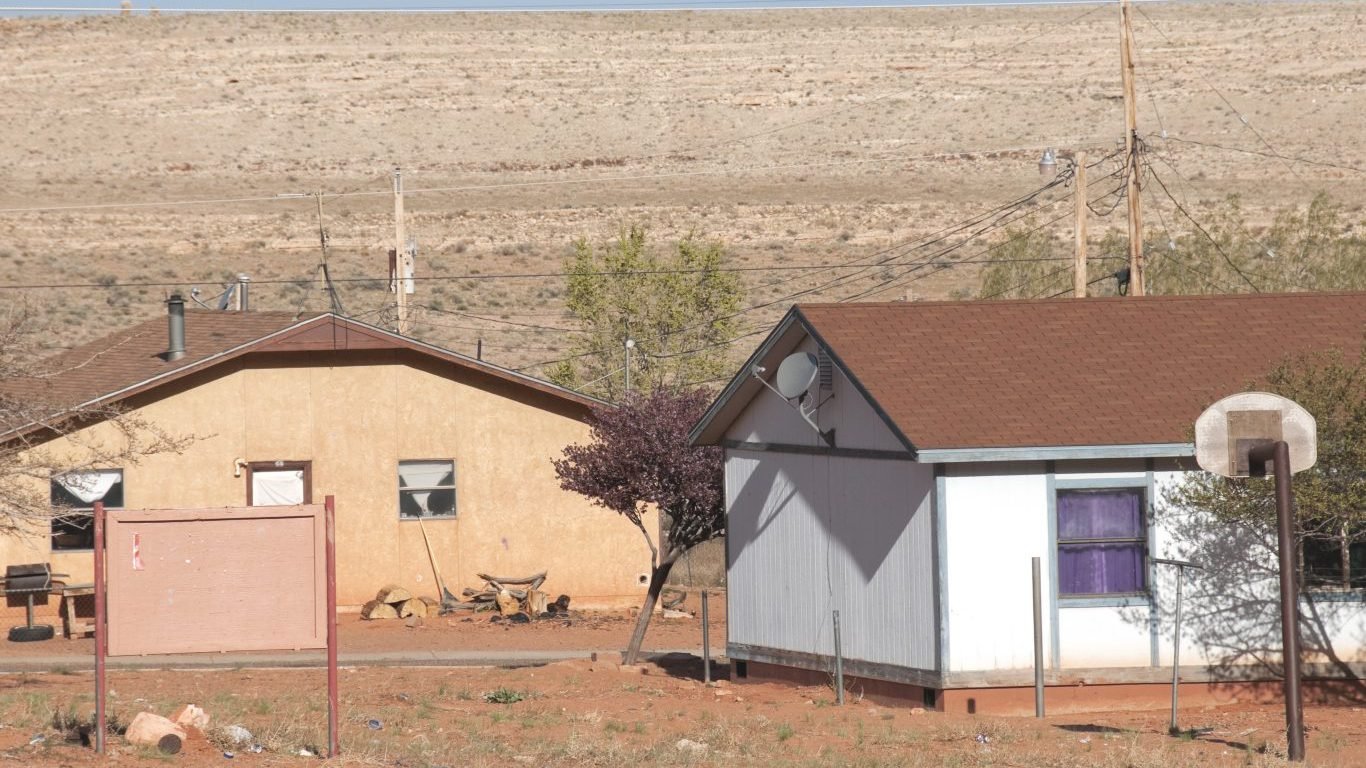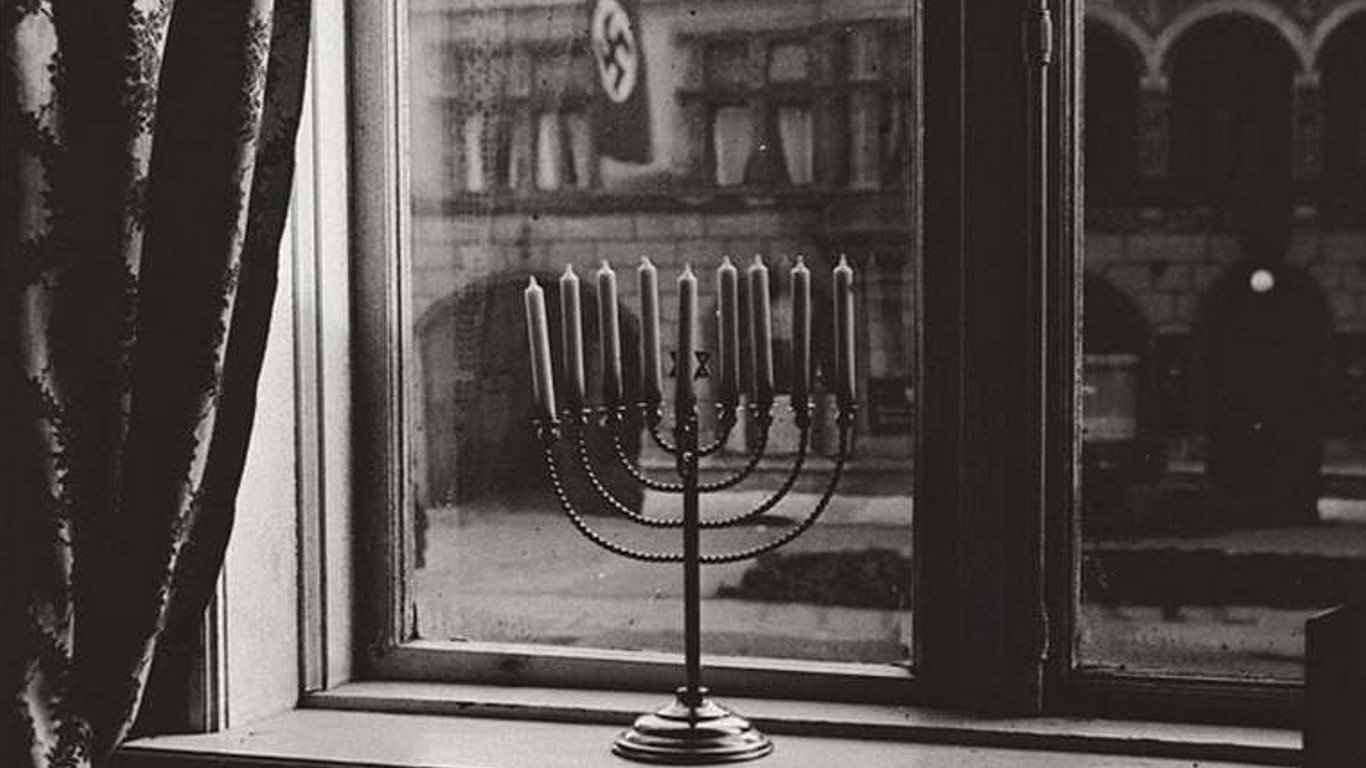

The famed Swiss-American photographer and filmmaker Robert Frank once said “There is one thing the photograph must contain – the humanity of the moment.”
Some photographs, however, capture not humanity but inhumanity. We’ve all heard or read stories or seen dramatizations on stage or screen of the incomprehensible, unforgivable horrors of what the Nazis called the “final solution” to “the Jewish problem.” Some of us even have family members who actually lived through the Holocaust (or perished during it).
Seeing photographic images of the camps where millions of Jews and other “undesirables” were tortured, worked to death, or slaughtered outright, however, brings the abominations of that darkest period in modern history into focus (in more ways than one) – and in these troubled times, both in America and abroad, perhaps we need to be reminded of this all-too-recent evil to strengthen our commitment to ensuring that nothing like this ever happens again.
With that in mind, 24/7 Wall St. reviewed historical photo archives from sources including from Getty Images, Picryl, Wikimedia, and the Library of Congress to compile a list of horrifying images of Nazi death camps.
The names of camps like Auschwitz (which in fact wasn’t a single camp but an ever-growing complex of more than 40 of them) and Buchenwald are infamous – but the Nazis and their allies actually established more than 44,000 camps, ghettos, prisons, and other incarceration or extermination sites in Germany, Poland, Austria, and elsewhere between 1933 and 1945. (These are 20 horrifying images of Auschwitz.)
Click here to see horrifying images of Nazi death camps
Technically, some of these (Auschwitz, Treblinka, and Sobibor among them) were extermination – or death – camps where prisoners, almost all of them Jewish, were brought for one purpose: to be killed as quickly and efficiently as possible. Others were concentration camps, whose inmates were mostly Jews, but also homosexuals, Roma, communists, prisoners of war, and others considered sub-human by the Nazis. They were often not killed outright but were worked or starved to death or subjected to bizarre and deadly quasi-medical experiments. (Here are 30 symbols used by the Nazis to mark their victims.)
Whatever the Nazis may have called them, these were all death camps, and serve as reminders of the inhumanity of which the worst of our species have been capable.
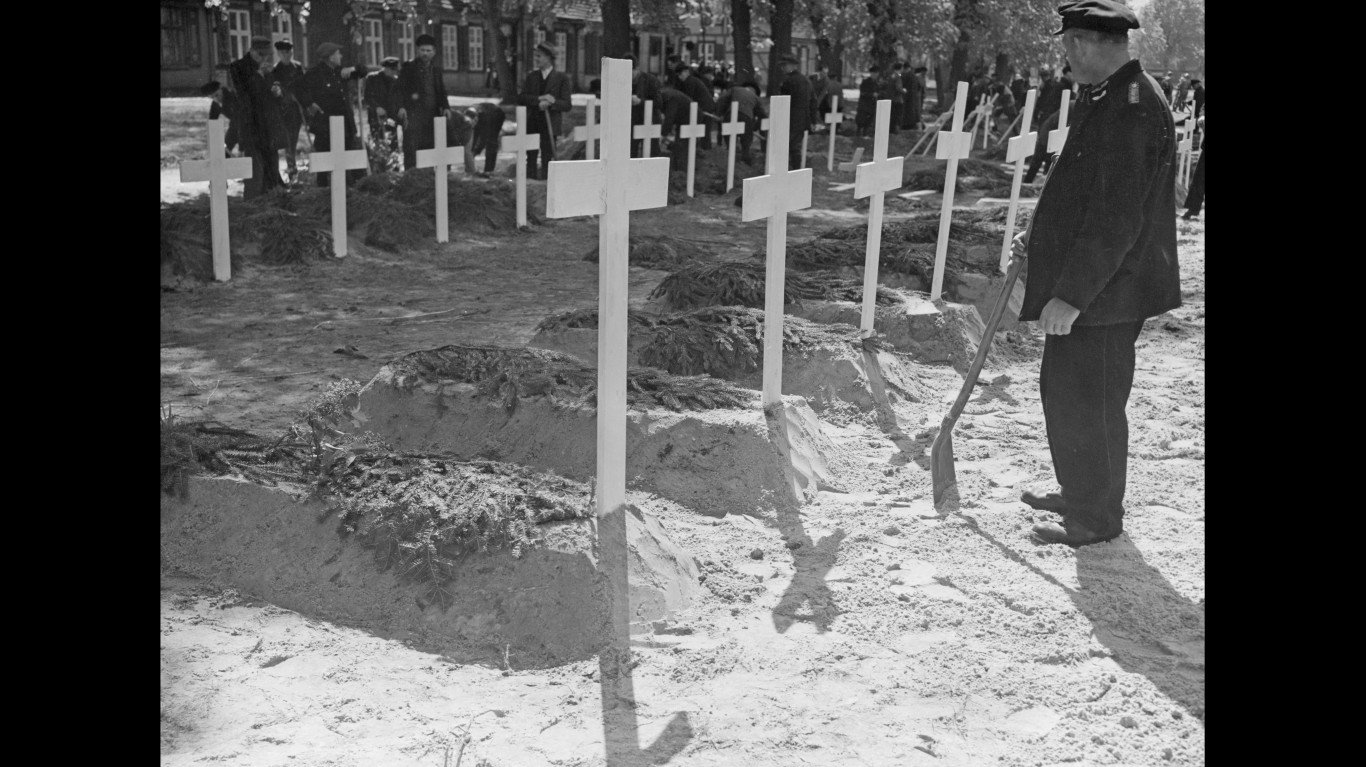
1. Wobbelin concentration camp
A German gravedigger burying victims from Wobbelin concentration camp near Ludwigslust, Germany, after the camp’s liberation in early May 1945.
[in-text-ad]
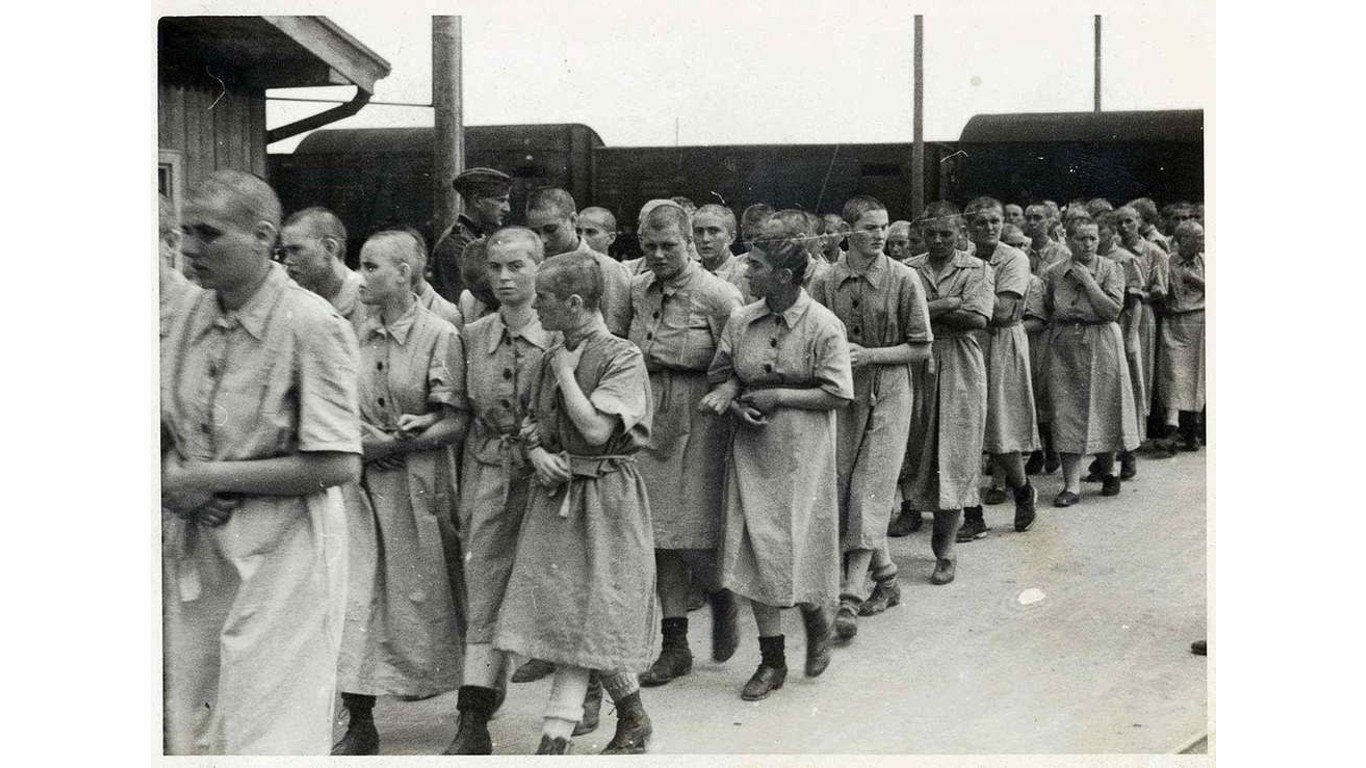
2. Female prisoners at Birkenau
Female prisoners at Auschwitz II-Birkenau in Poland in 1944.
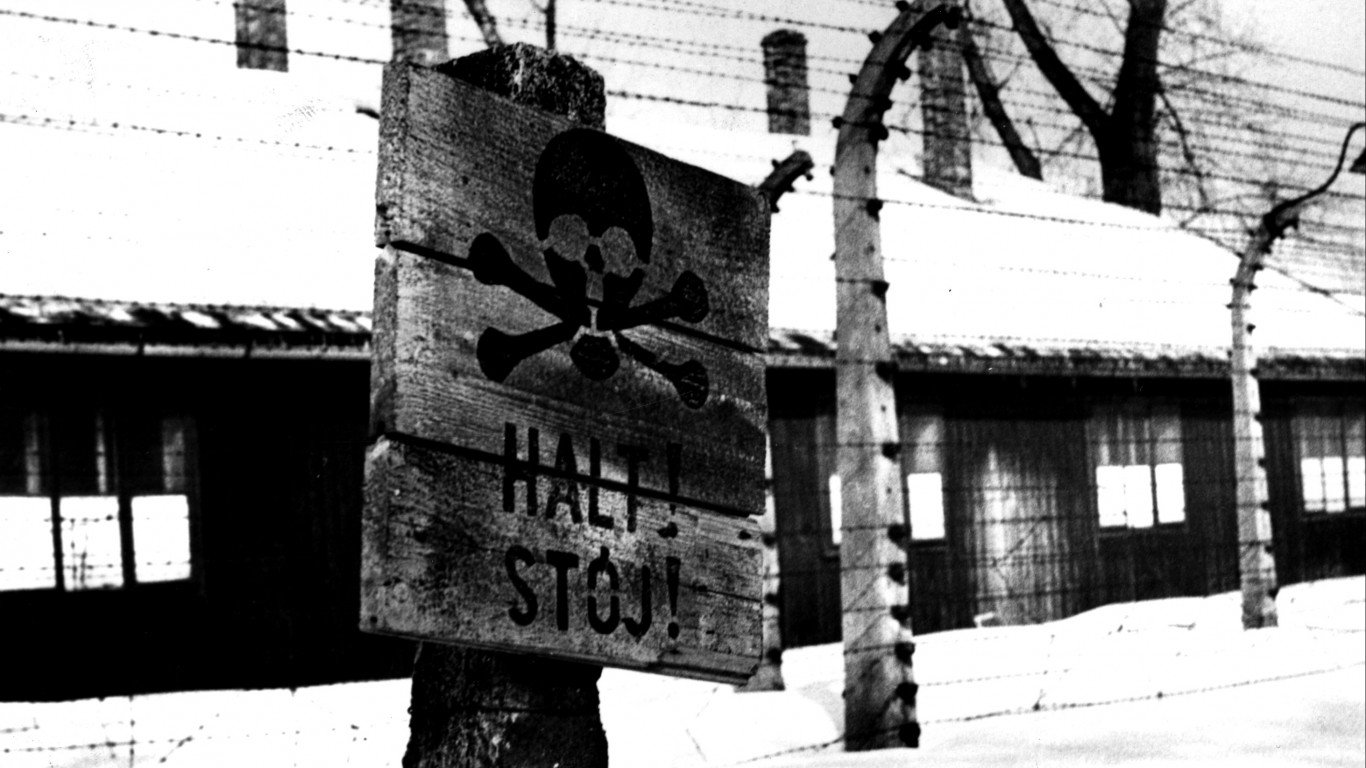
3. Concentration camp sign
A sign outside Auschwitz reading “Halt!” in German and Polish, warning people to stay away from the camp.
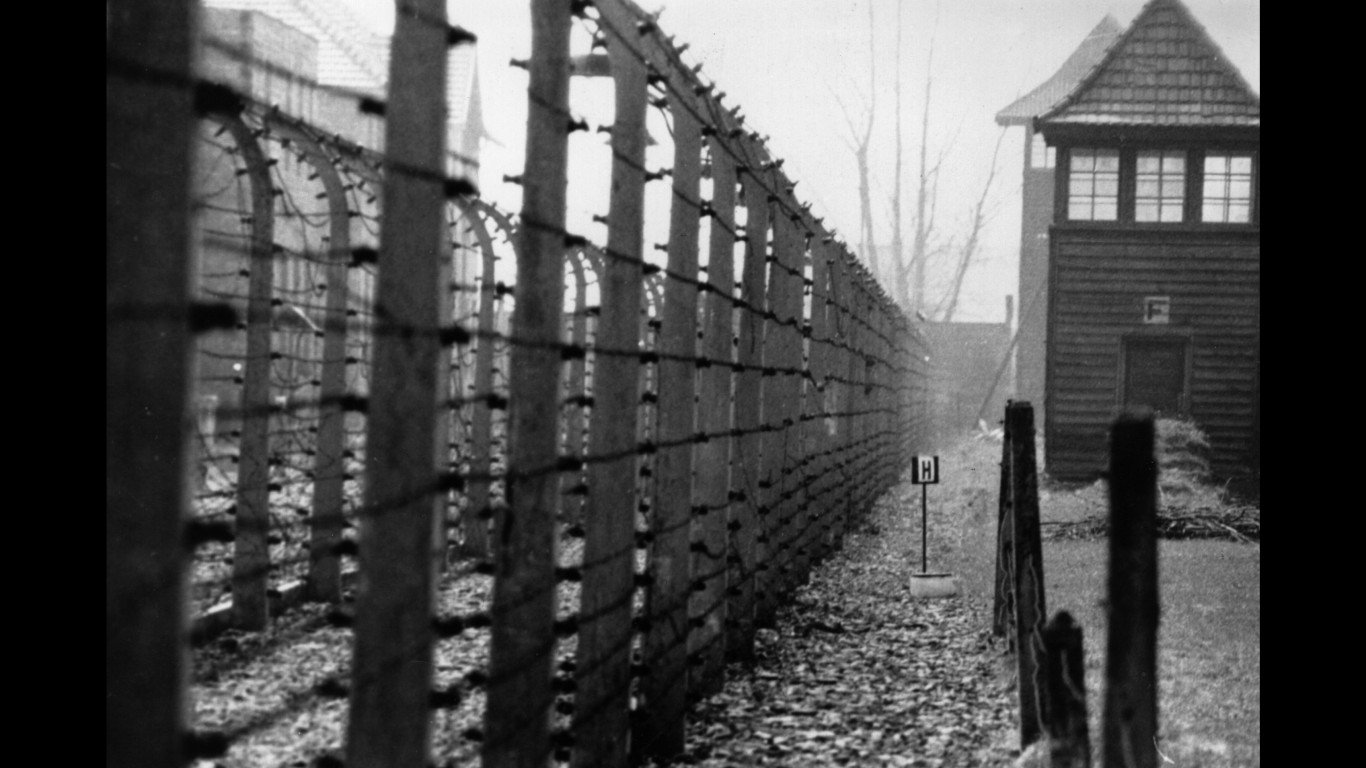
4. Auschwitz
The perimeter fence of Auschwitz.
[in-text-ad-2]
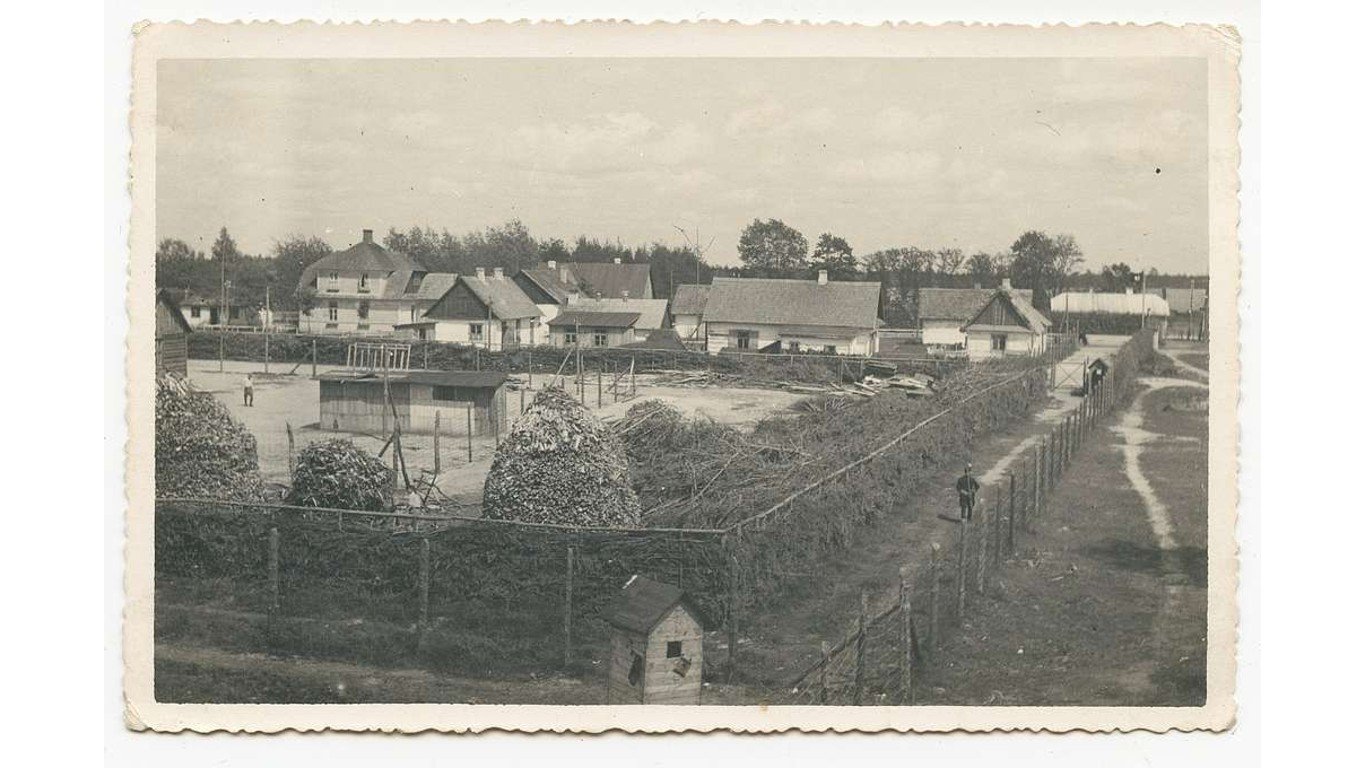
5. Sobibor, a death camp in Poland
The Sobibor extermination camp in Poland in summer 1943, where at least 167,000 people were killed between April 1942 and mid-October 1943.
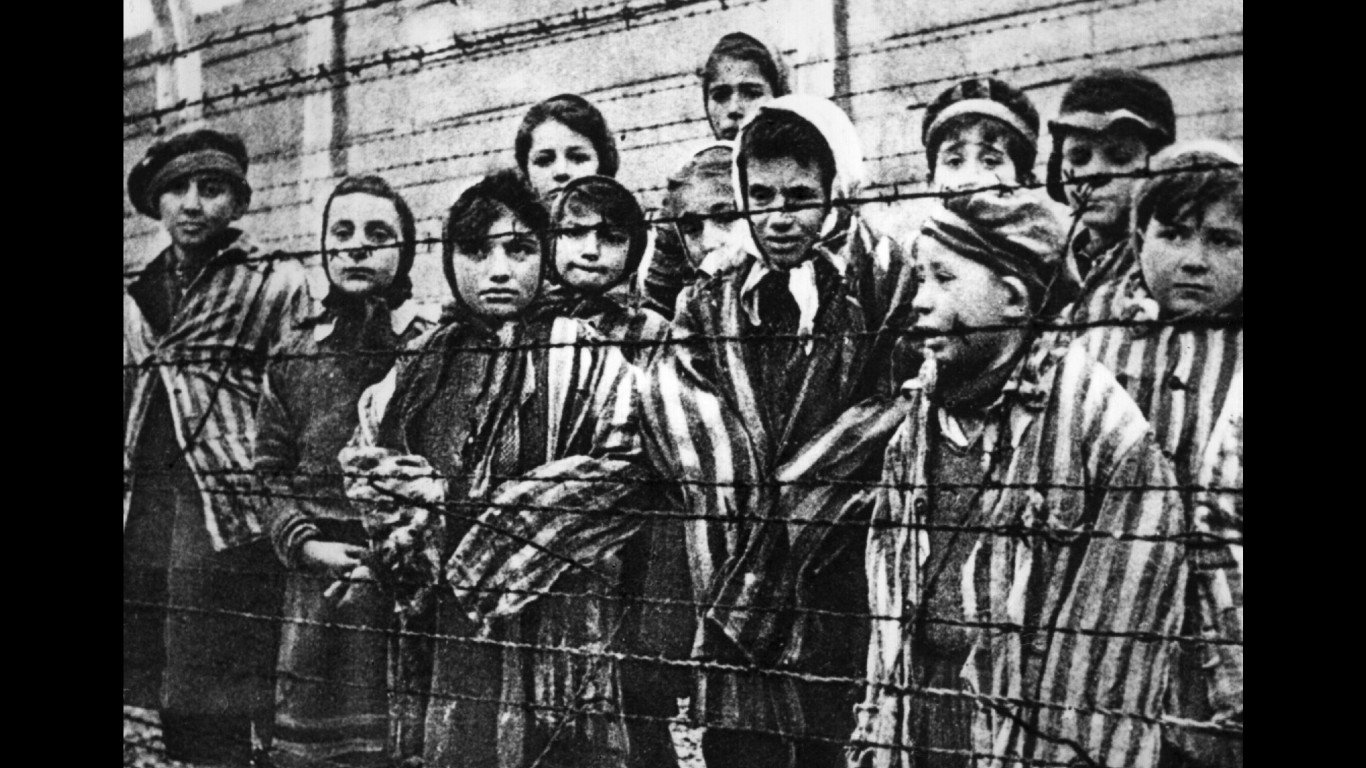
6. Child Survivors Of Auschwitz
A group of children who survived the camp are photographed upon its liberation by the Red Army in 1945.
[in-text-ad]
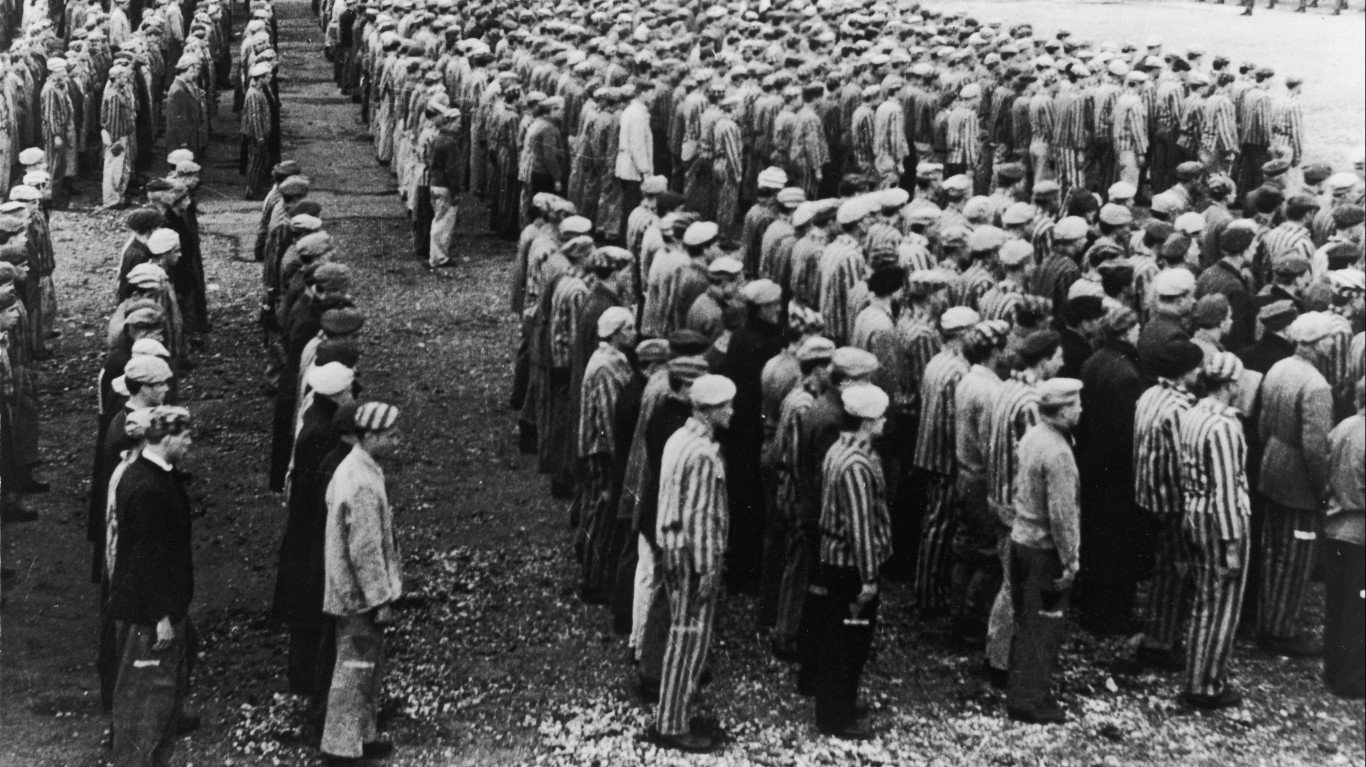
7. Prisoners at Buchenwald
A group of prisoners at the Buchenwald concentration camp, in about 1943.
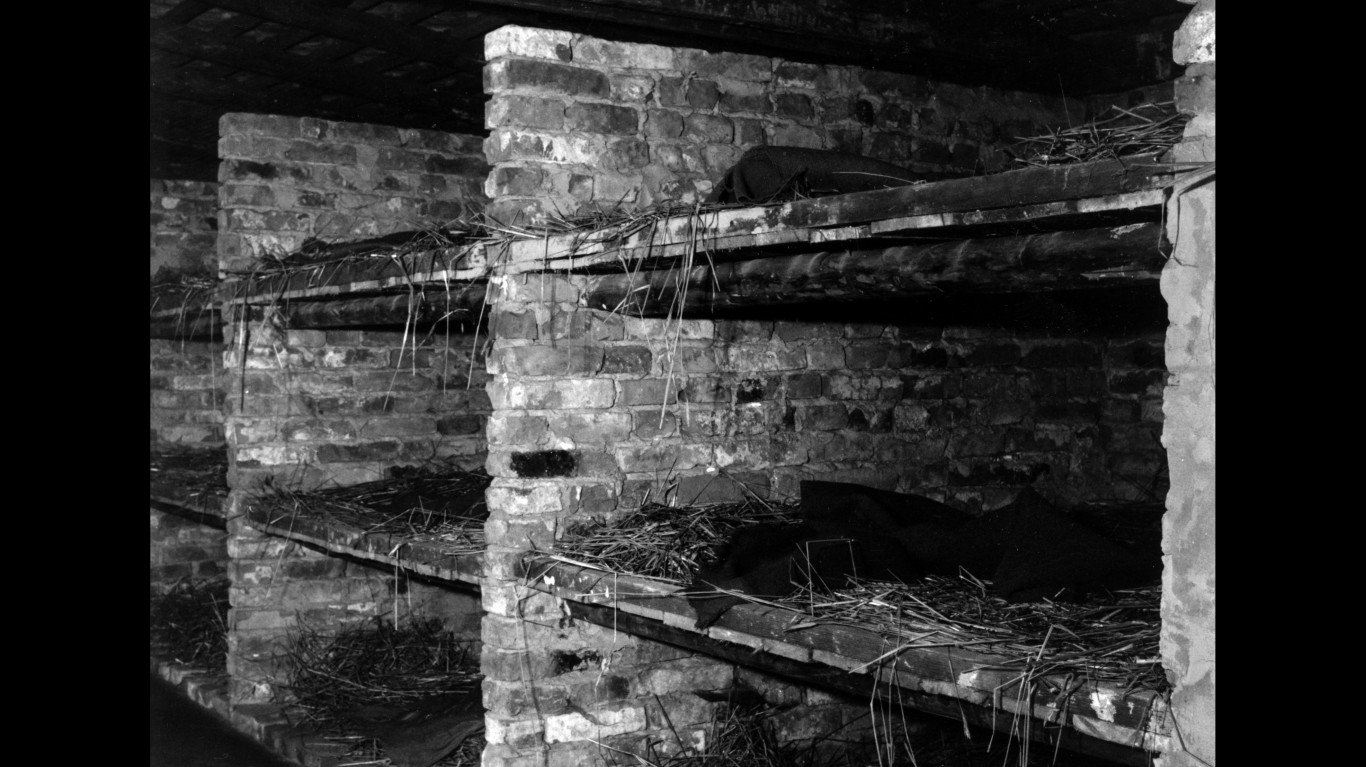
8. Death Camp Beds
Beds at Auschwitz. Sometimes four or five inmates were forced to sleep on a single bunk.
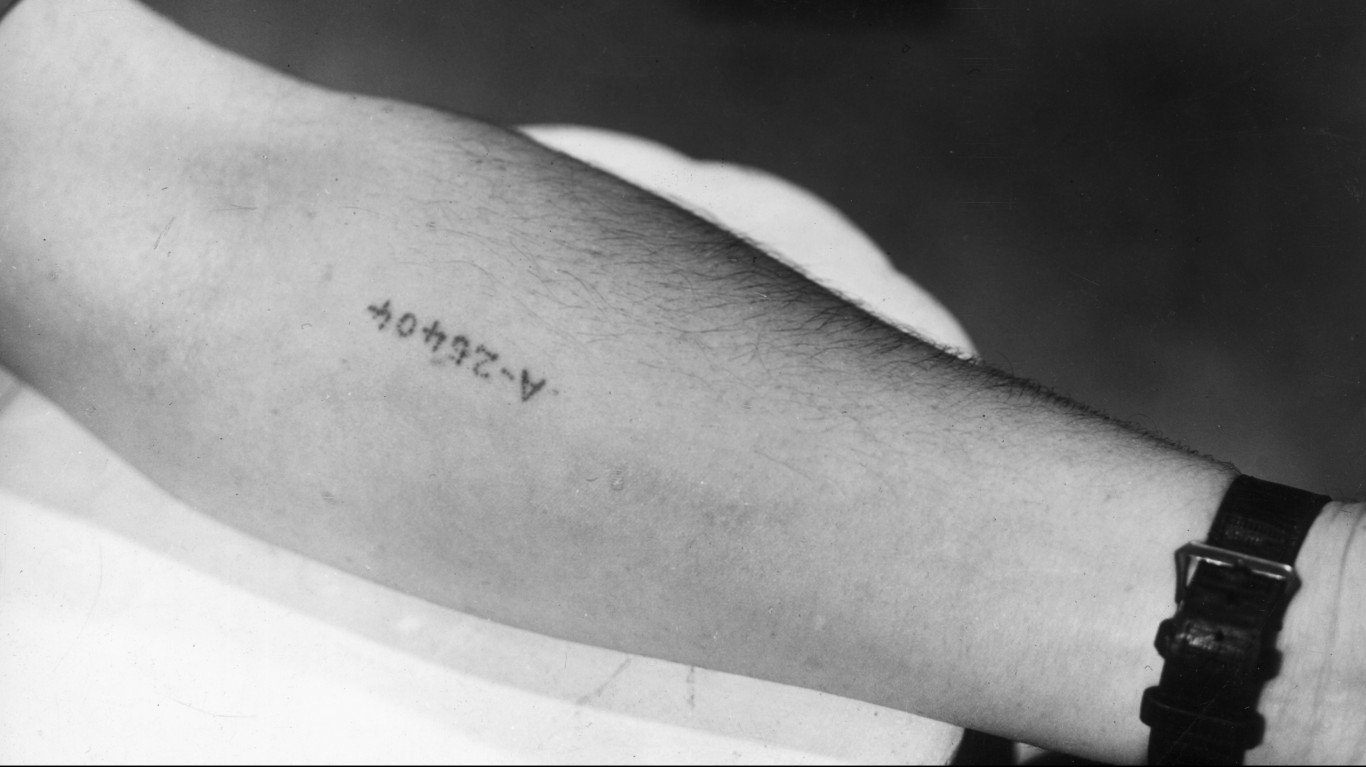
9. Mark of Auschwitz
A former Auschwitz prisoner shows the serial number tattooed on his arm.
[in-text-ad-2]
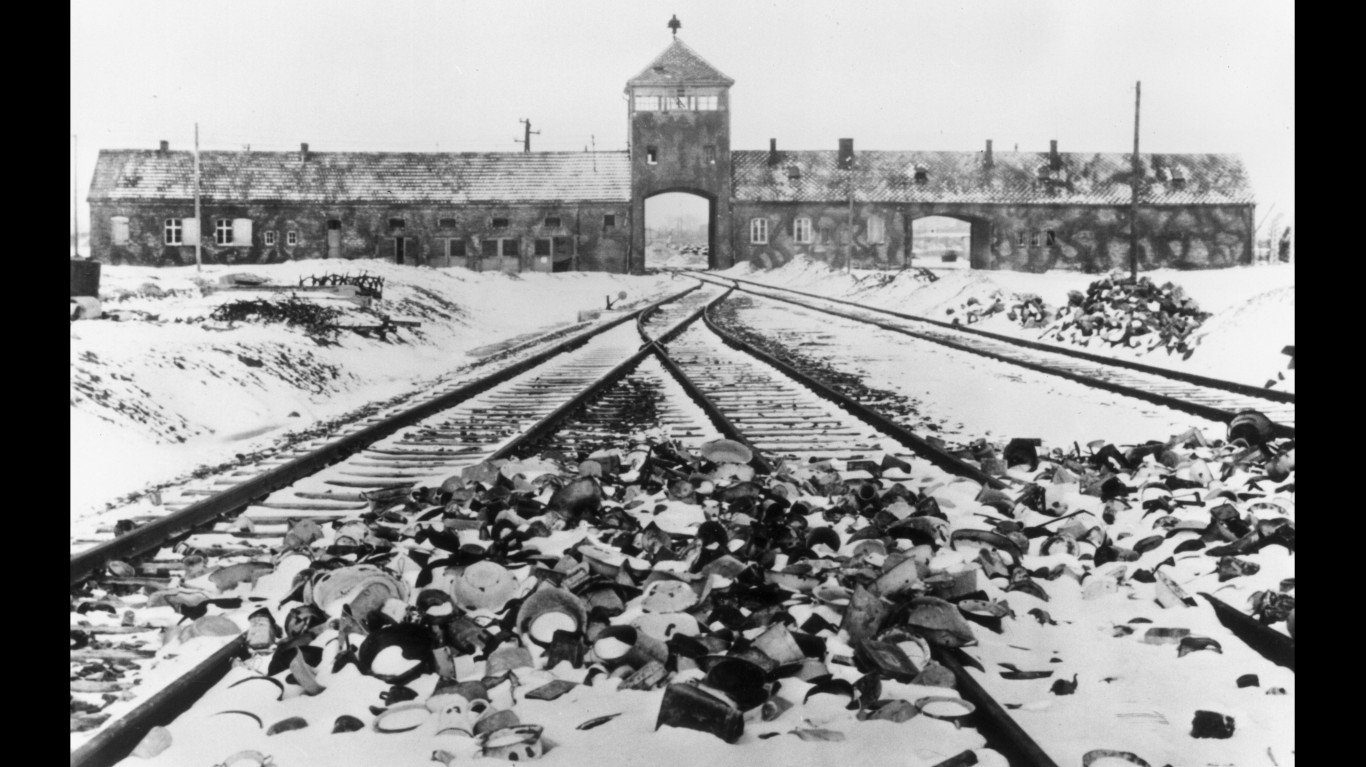
10. Images of Auschwitz
Personal belongings of Auschwitz prisoners are strewn along the train tracks in the snow outside the camp entrance.
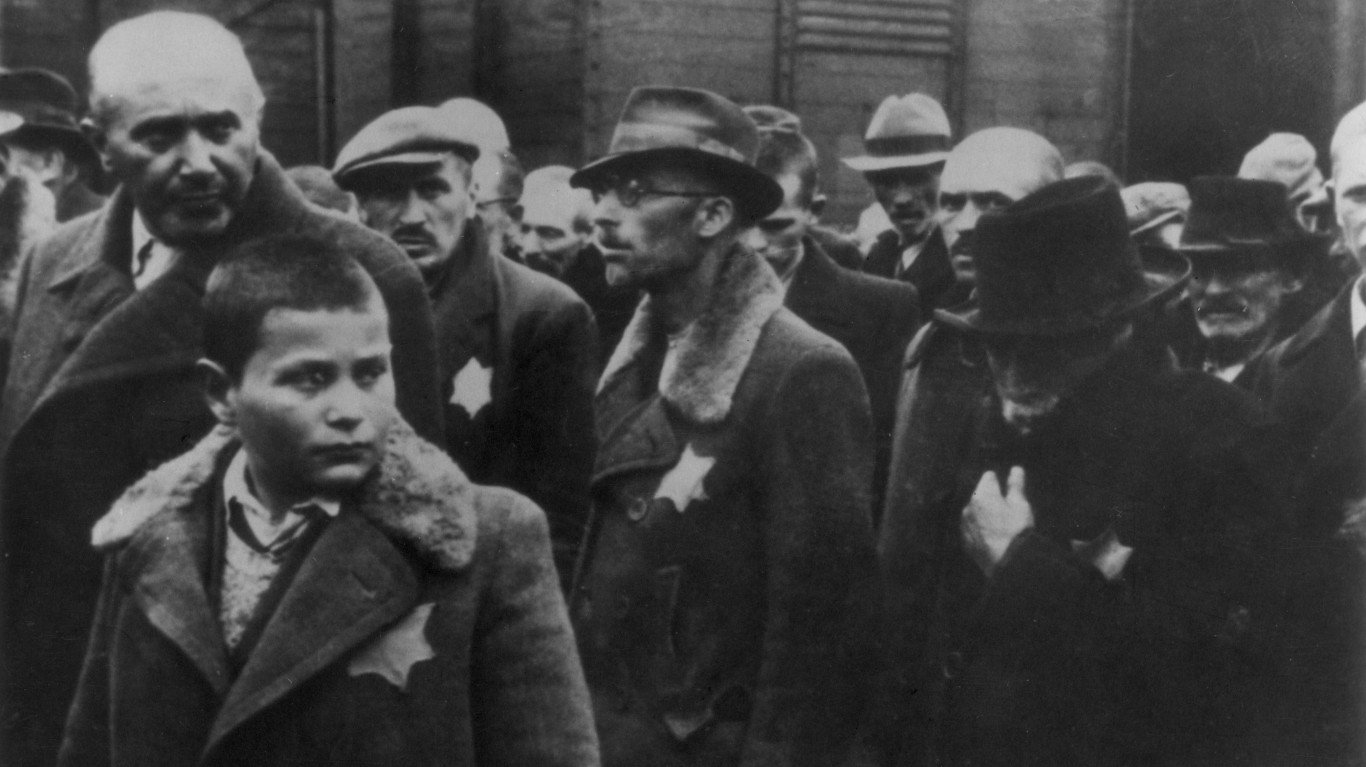
11. Deportees
Deportees with yellow stars sewn to their coats – a sign that they’re Jewish – arrive at Auschwitz.
[in-text-ad]

12. An SS Death’s Head Unit at the Bełżec extermination camp
Members of one of the SS Totenkopfverbände, or Death’s Head Units, at Bełżec extermination camp in 1942.

13. A destroyed Magirus-Deutz van
Found near Kolo, near the Chełmno extermination camp in Poland, this is the type of van converted by the Nazis into a mobile gas chamber, with exhaust fumes diverted into a sealed rear compartment filled with prisoners.
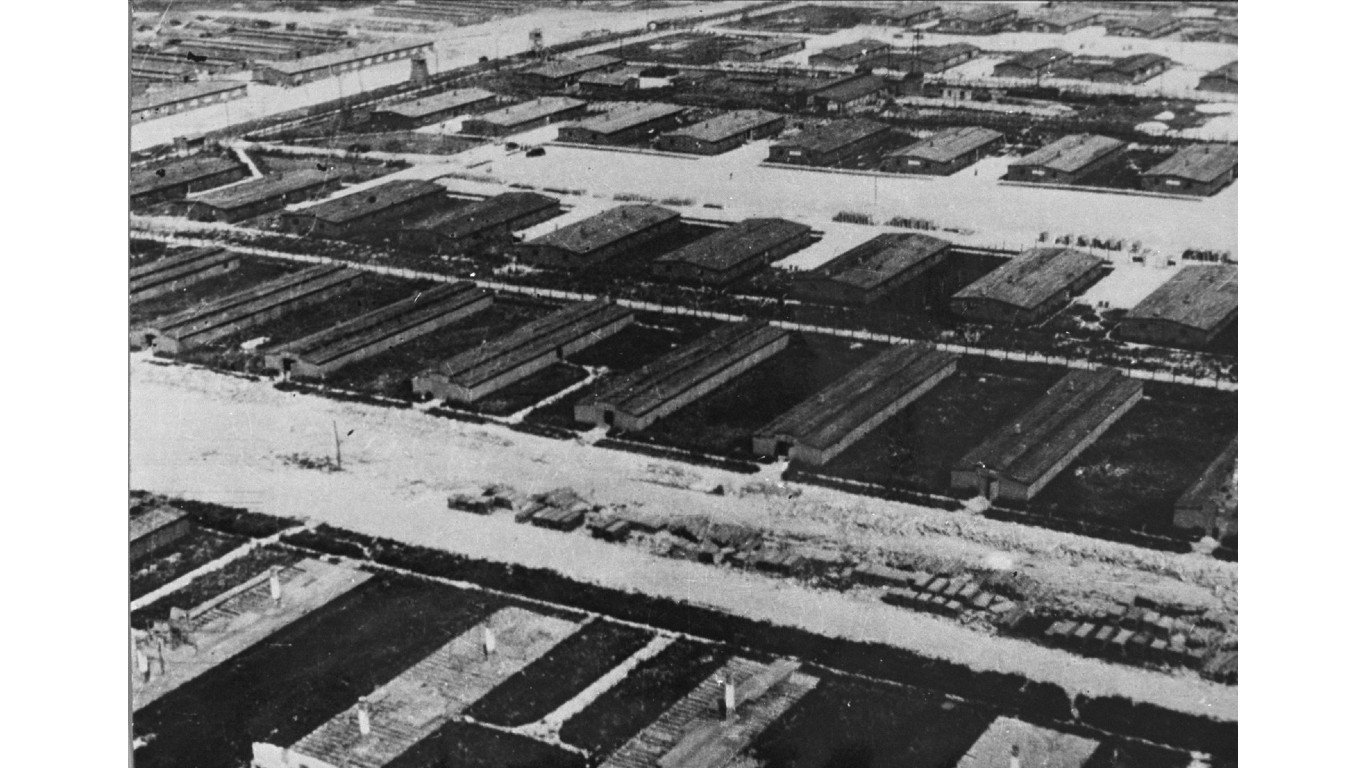
14. Majdanek
A reconnaissance photograph of the Majdanek concentration camp in Poland, taken on June 24, 1944.
[in-text-ad-2]
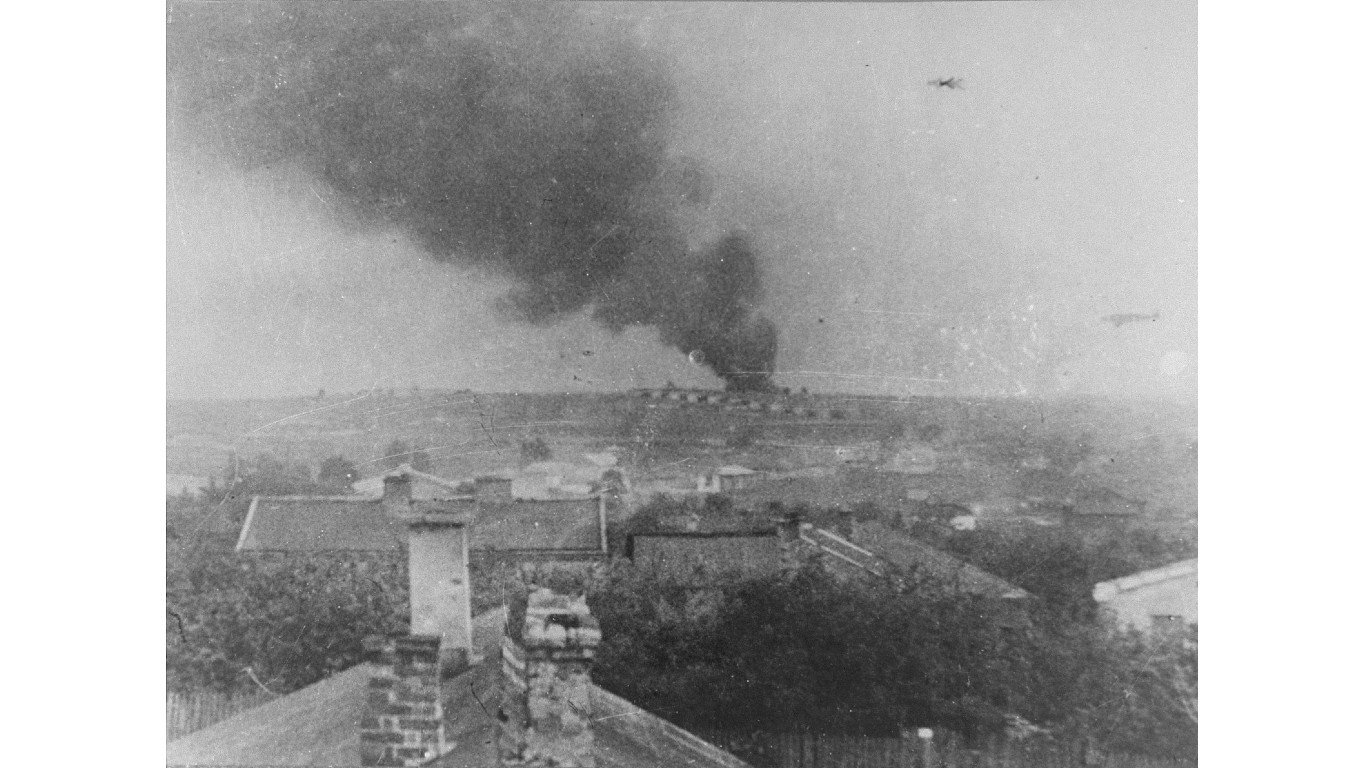
15. Smoke over Majdanek
A view of smoke rising from the Majdanek concentration camp in Poland.
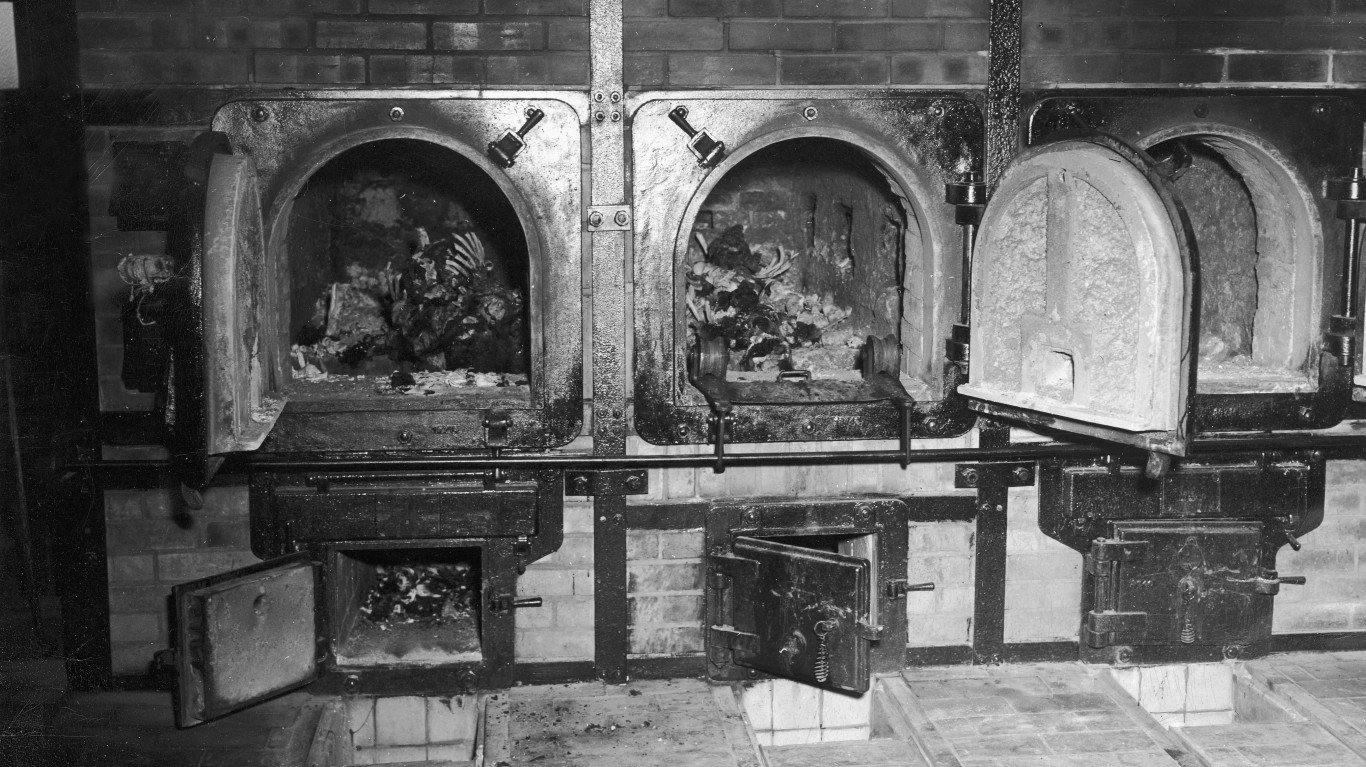
16. Crematorium at Buchenwald
Human remains, including those of an anti-Nazi German woman, found in the crematorium at Buchenwald when it was liberated in April 1945.
[in-text-ad]
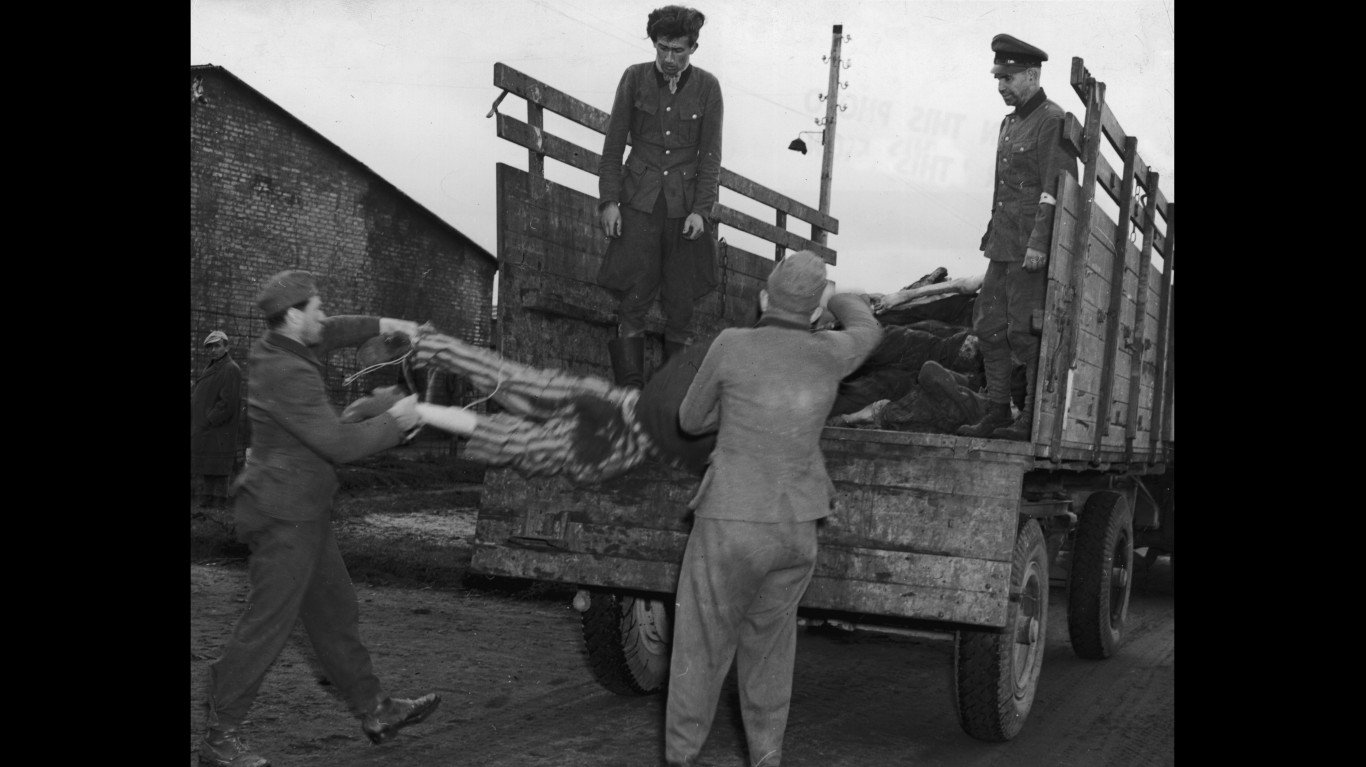
17. Belsen burials
SS troopers load the corpses of inmates of the Belsen concentration camp onto a truck for burial in a common grave.
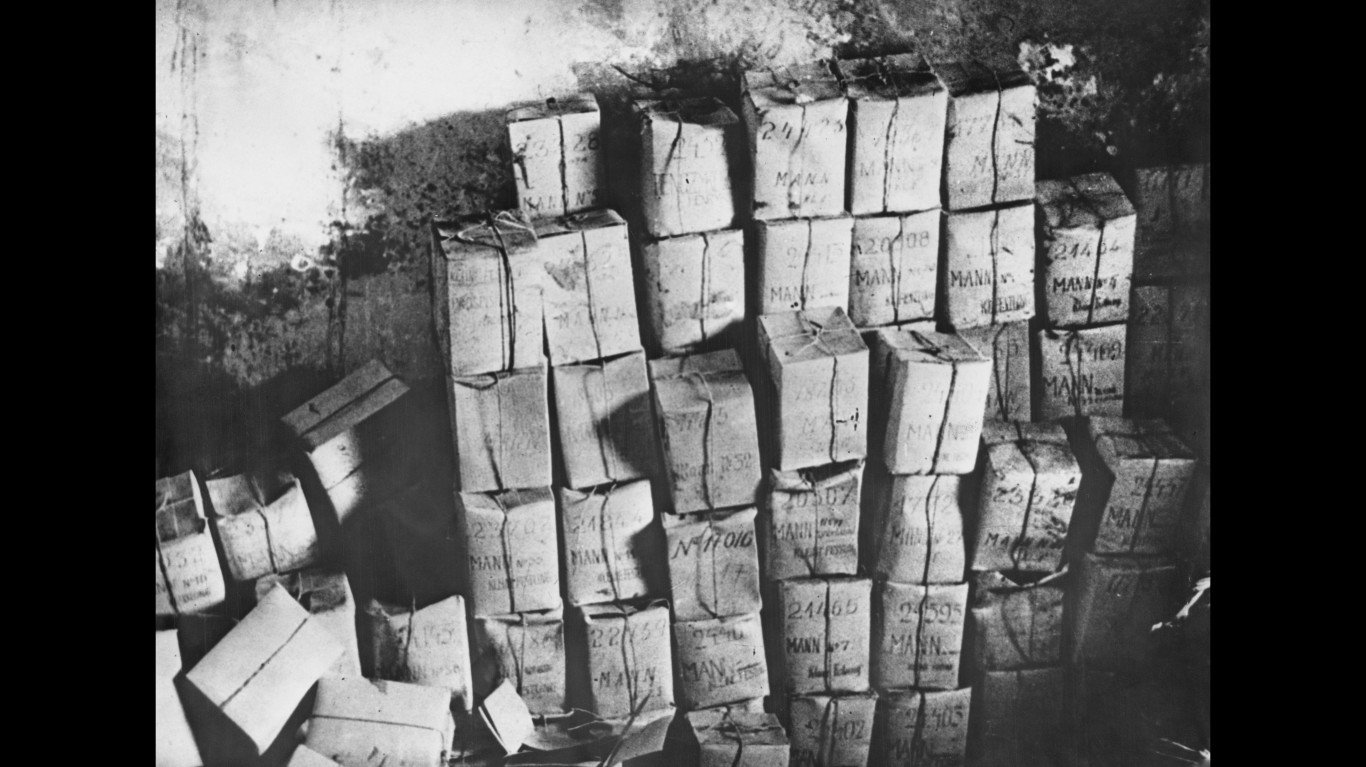
18. Victims’ ashes at Theresienstadt
A stack of box-paper urns containing the ash remains of victims killed at the Theresienstadt Ghetto and extermination camp established by the Nazis near the fortress town of Terezín in Czechoslovakia.
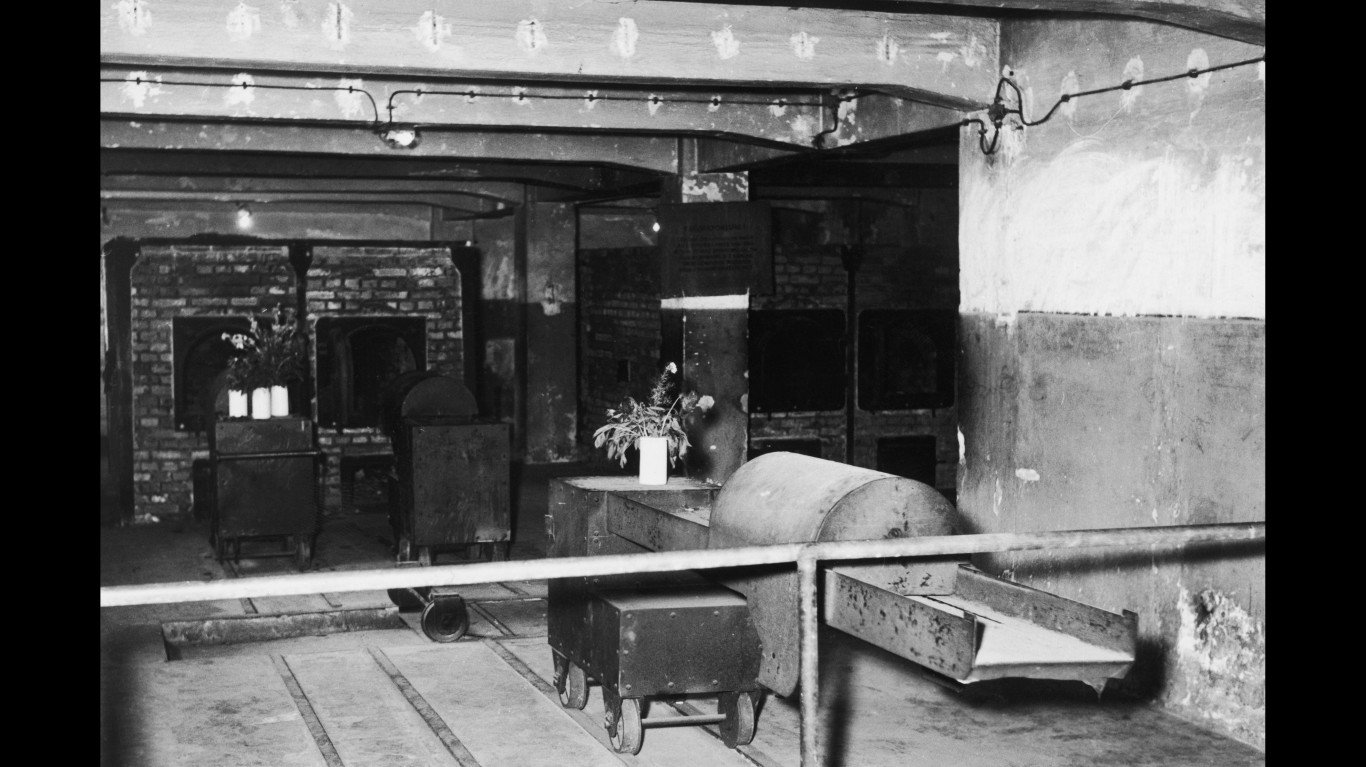
19. Auschwitz crematorium
The first crematorium built at Auschwitz, photographed after the war in 1955.
[in-text-ad-2]
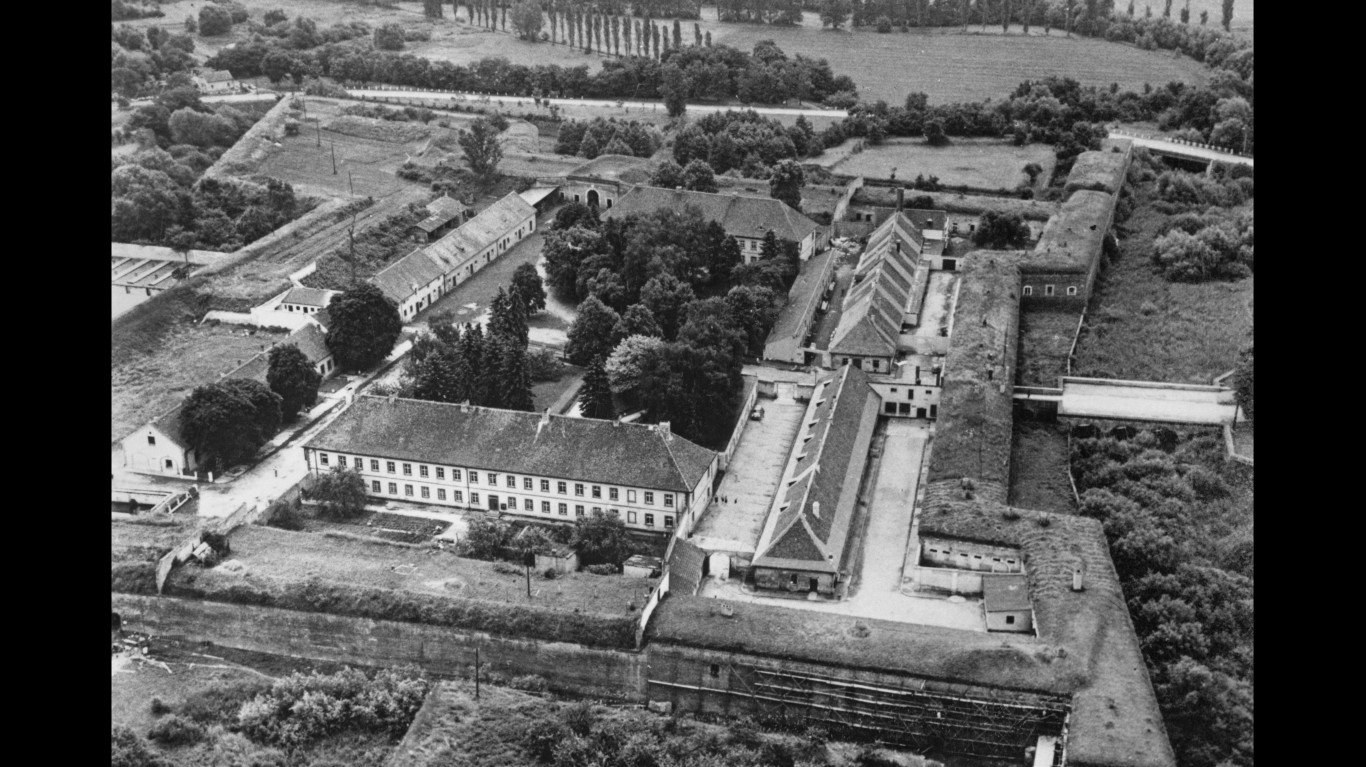
20. Theresienstadt Ghetto
An aerial view of the Theresienstadt Ghetto in Czechoslovakia, established by the Nazis as a stop on the way to extermination camps for some prisoners and as the site of the “final solution” for others.
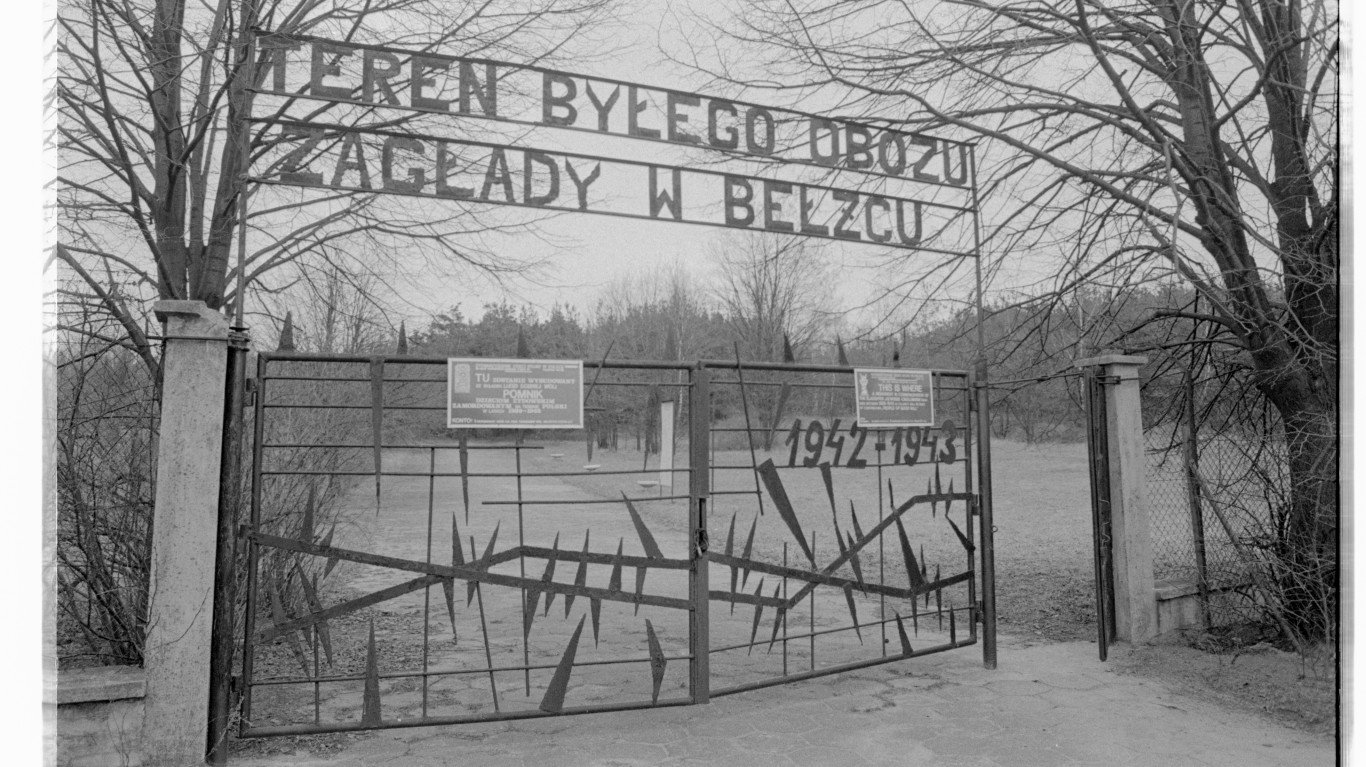
21. Front gate at Bełżec
The front gate at the Bełżec extermination camp in Poland.
[in-text-ad]
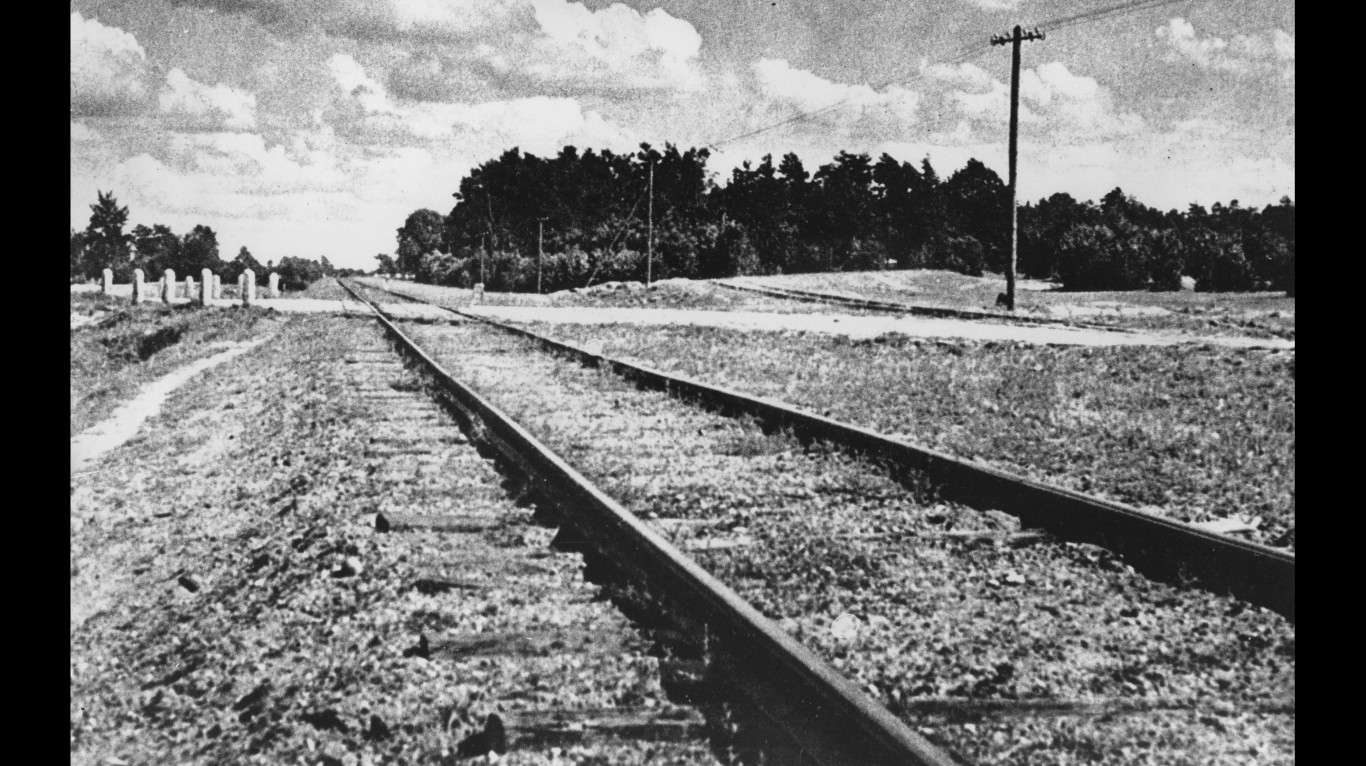
22. Tracks to Treblinka
The railroad tracks leading to Treblinka extermination camp in Poland, where Jews, Poles, Roma, and Soviet POWs were killed.
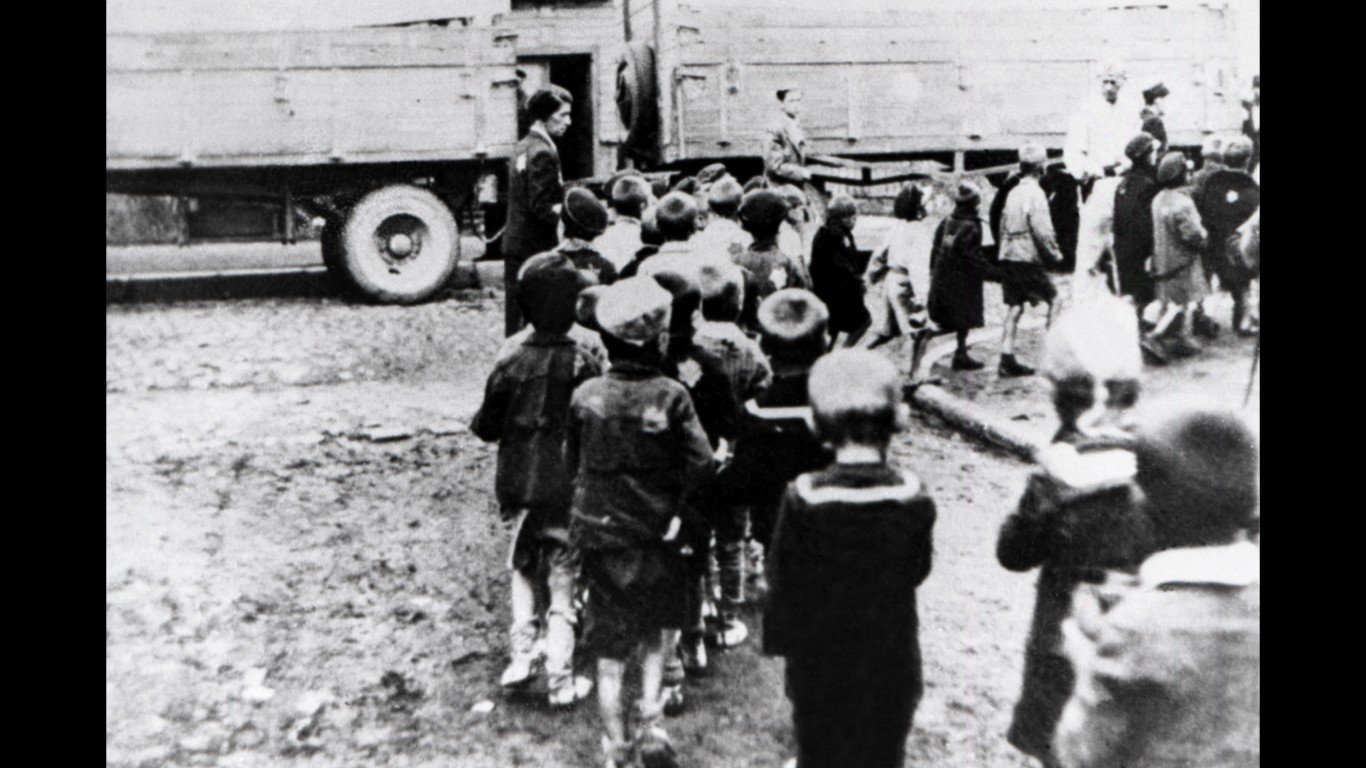
23. From Lodz To Chelmno
The deportation of children from Łódź Ghetto in Poland to the Chełmno extermination camp in Poland, September 1942.
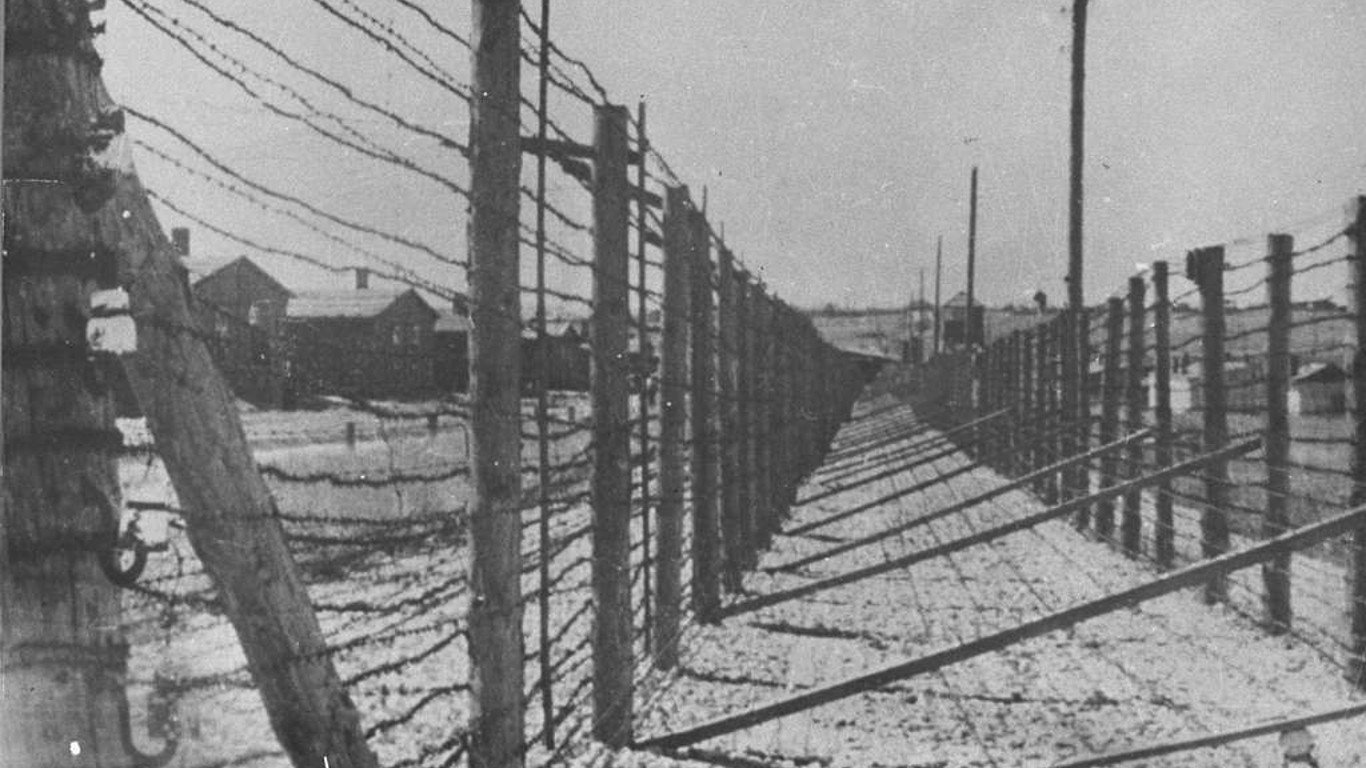
24. Fences around Majdanek
Barbed wire fences enclosing a portion of the Majdanek concentration camp in Poland.
[in-text-ad-2]
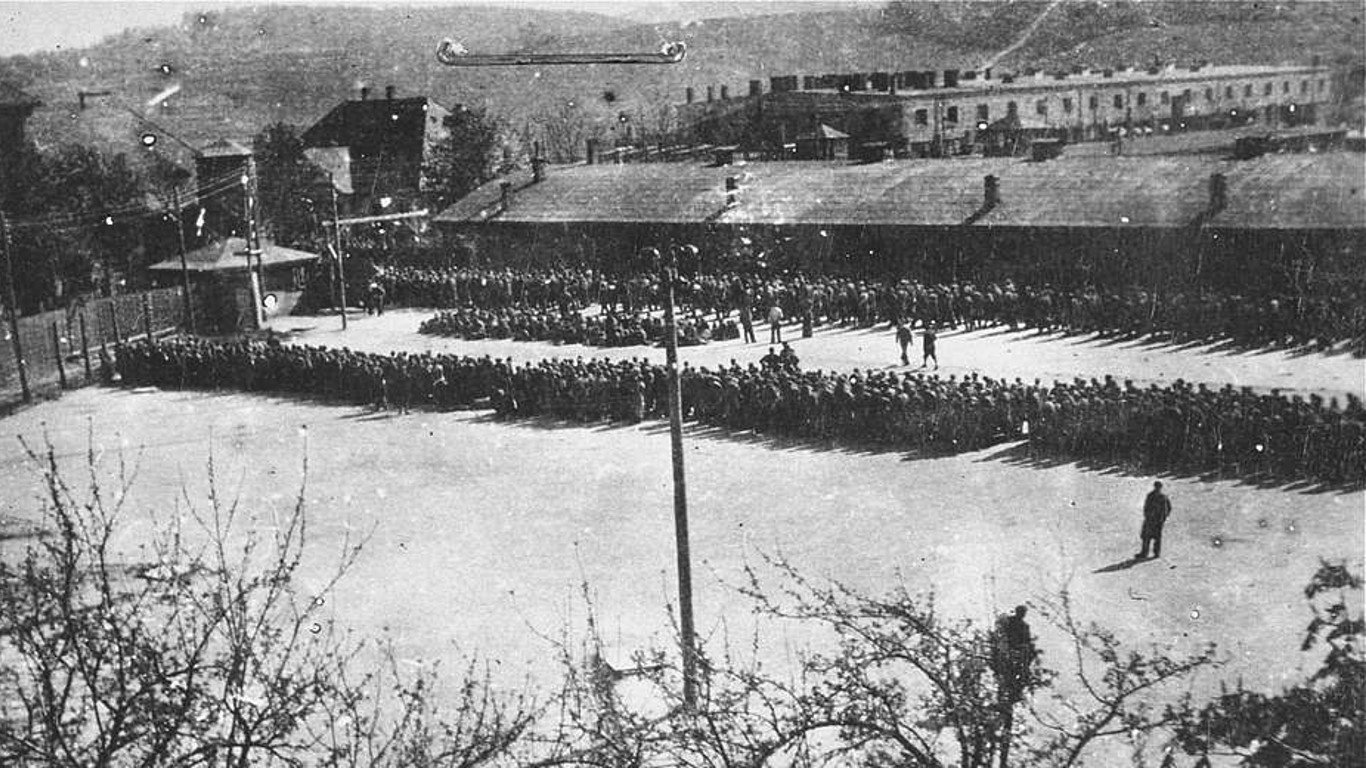
25. Roll call at Melk
Prisoners assembled for roll call at Melk, a subcamp of the Mauthausen concentration camp in Austria, where prisoners from more than 15 countries, about 30% of them Jews, were held.

26. Children liberated at Auschwitz
Children liberated at the Auschwitz concentration camp in 1945.
[in-text-ad]

27. Prisoners mixing concrete
Prisoners at the Buchenwald concentration camp in Germany mix concrete at a nearby quarry during forced labor.
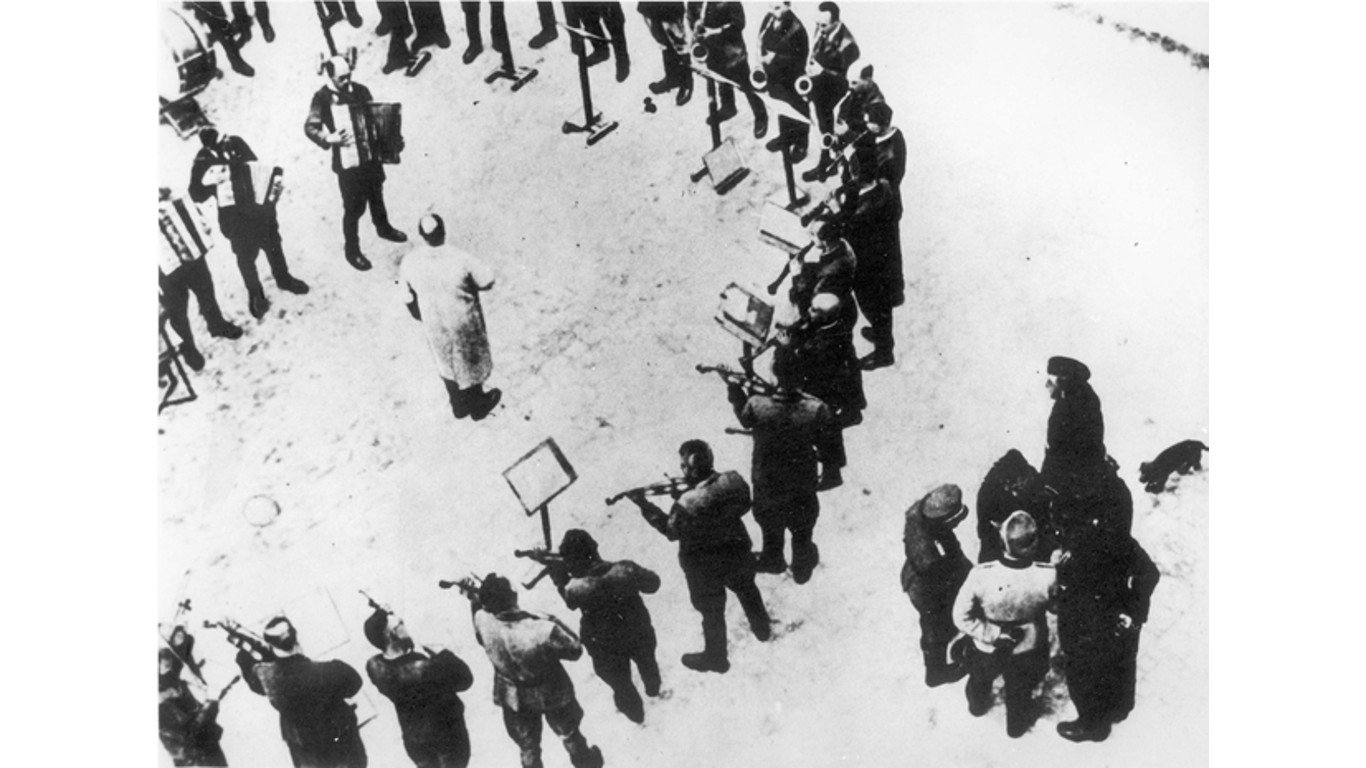
28. The Janowska camp orchestra
Jewish musicians at the Janowska concentration camp, forced to form an orchestra for the amusement of the Nazis.
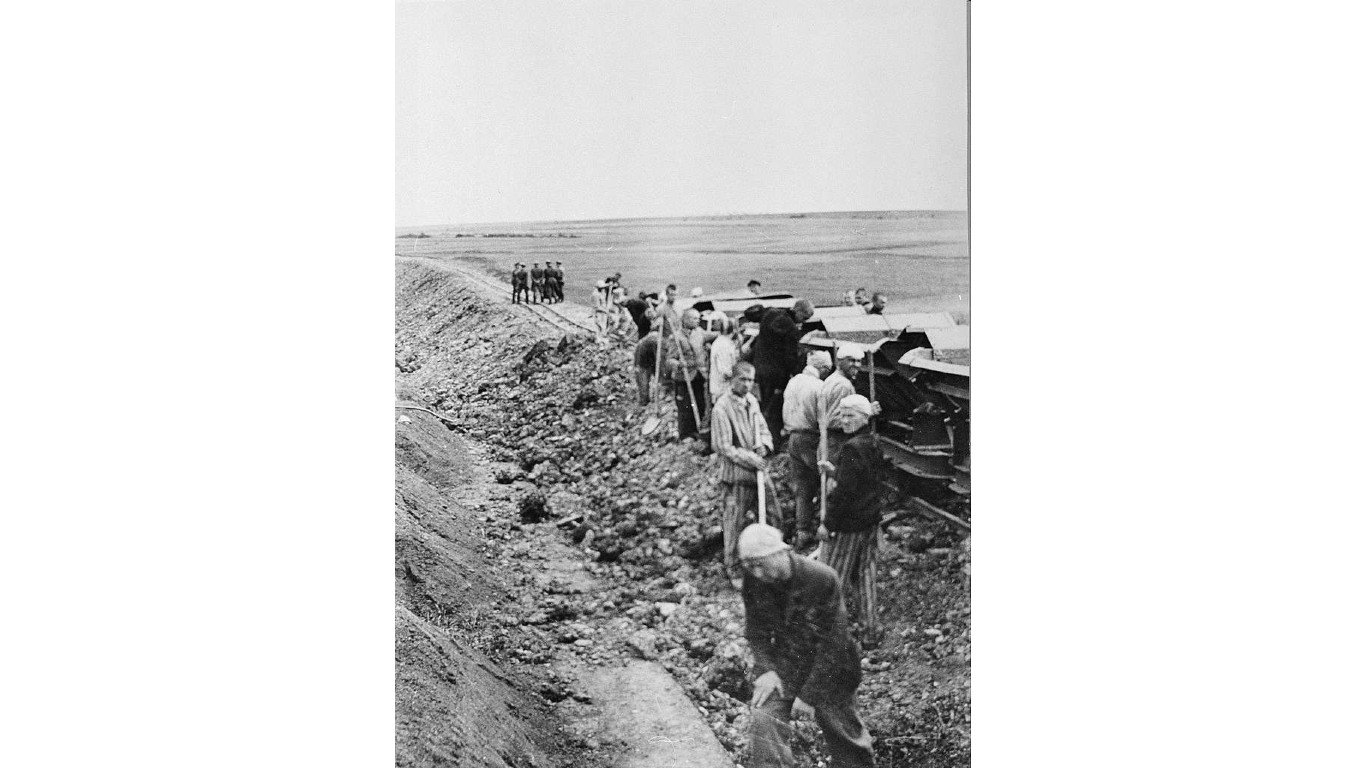
29. Buchenwald forced labor railroad
Prisoners from the Buchenwald concentration camp in forced labor building a 10-kilometer (6.2-mile) track between Weimar-Schöndorf and Buchenwald, which they completed in three months.
[in-text-ad-2]
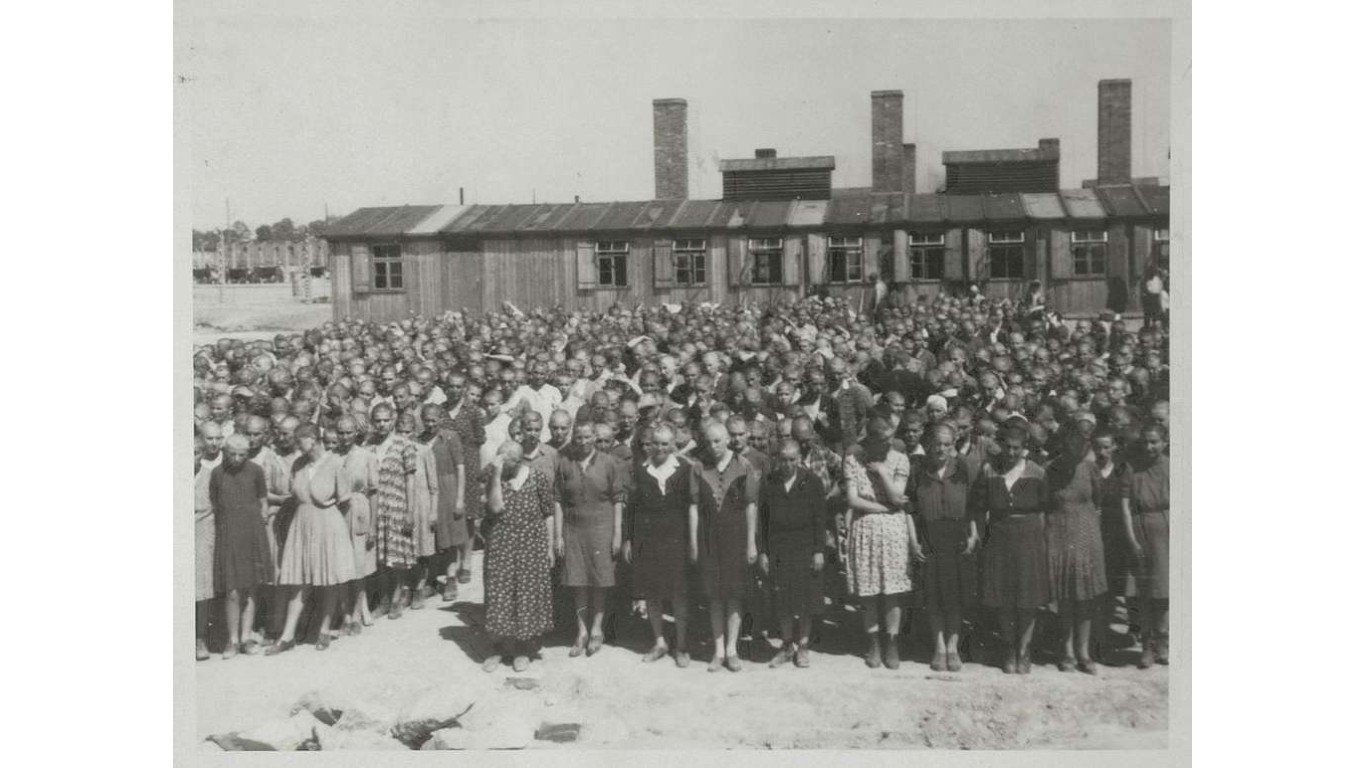
30. Roll call at Birkenau
Female prisoners at Auschwitz II-Birkenau stand for roll call in early 1944.

31. Crematorium of Majdanek after liberation
The crematorium at the Majdanek concentration camp in Poland after its liberation in 1944.
[in-text-ad]
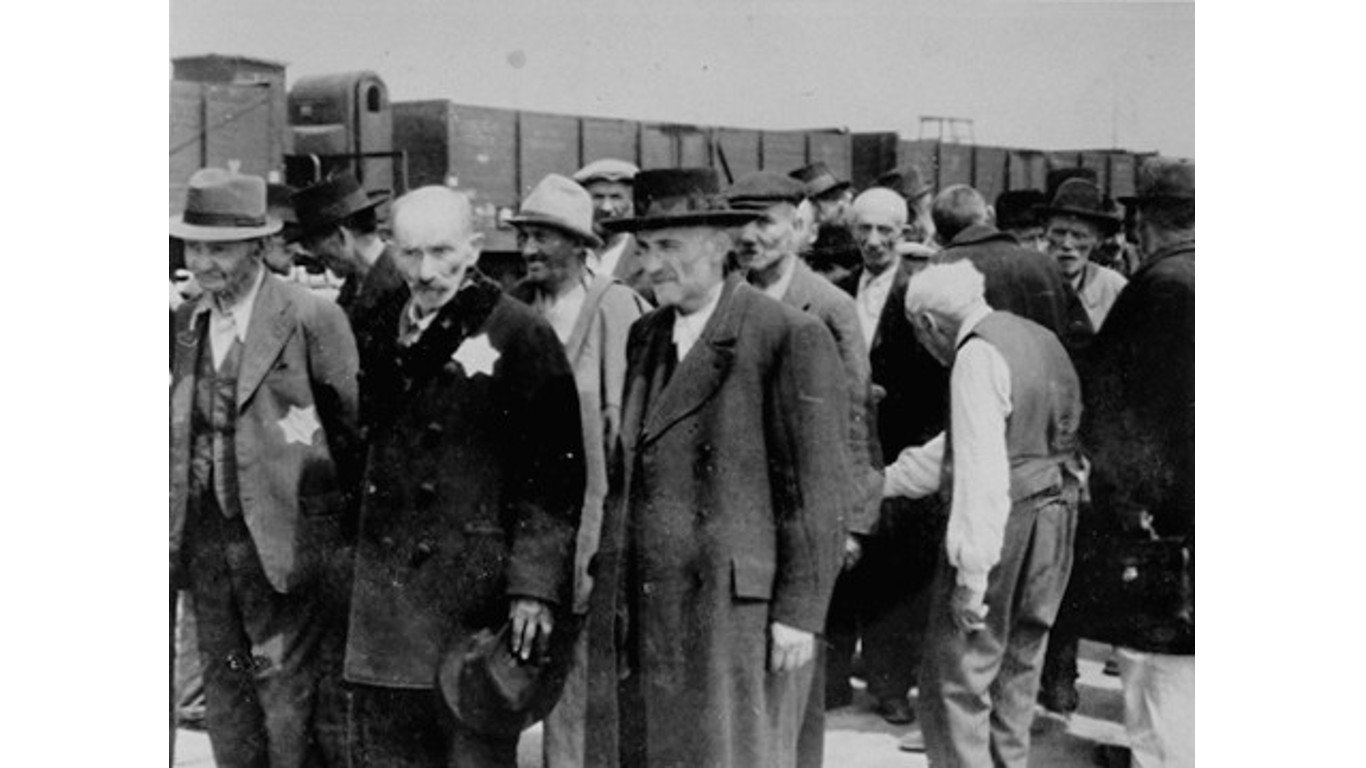
32. Jews await selection in Auschwitz
Jewish prisoners from Subcarpathian Rus, in what is now Ukraine, await selection – for forced labor or extermination – at Auschwitz II-Birkenau.
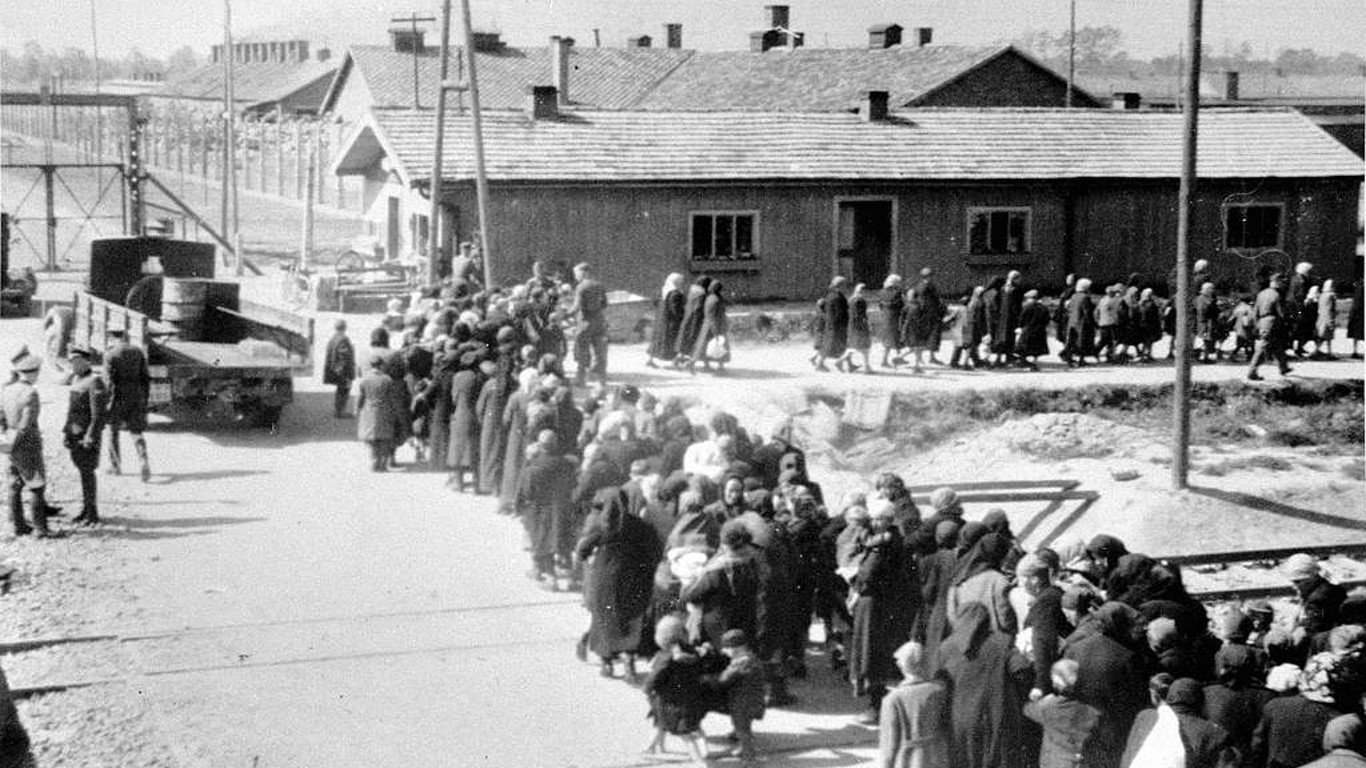
33. Jews at Birkenau walking towards the gas chambers
Hungarian Jews from the Tét ghetto walk towards the gas chambers and crematoria at Auschwitz II-Birkenau in 1944.
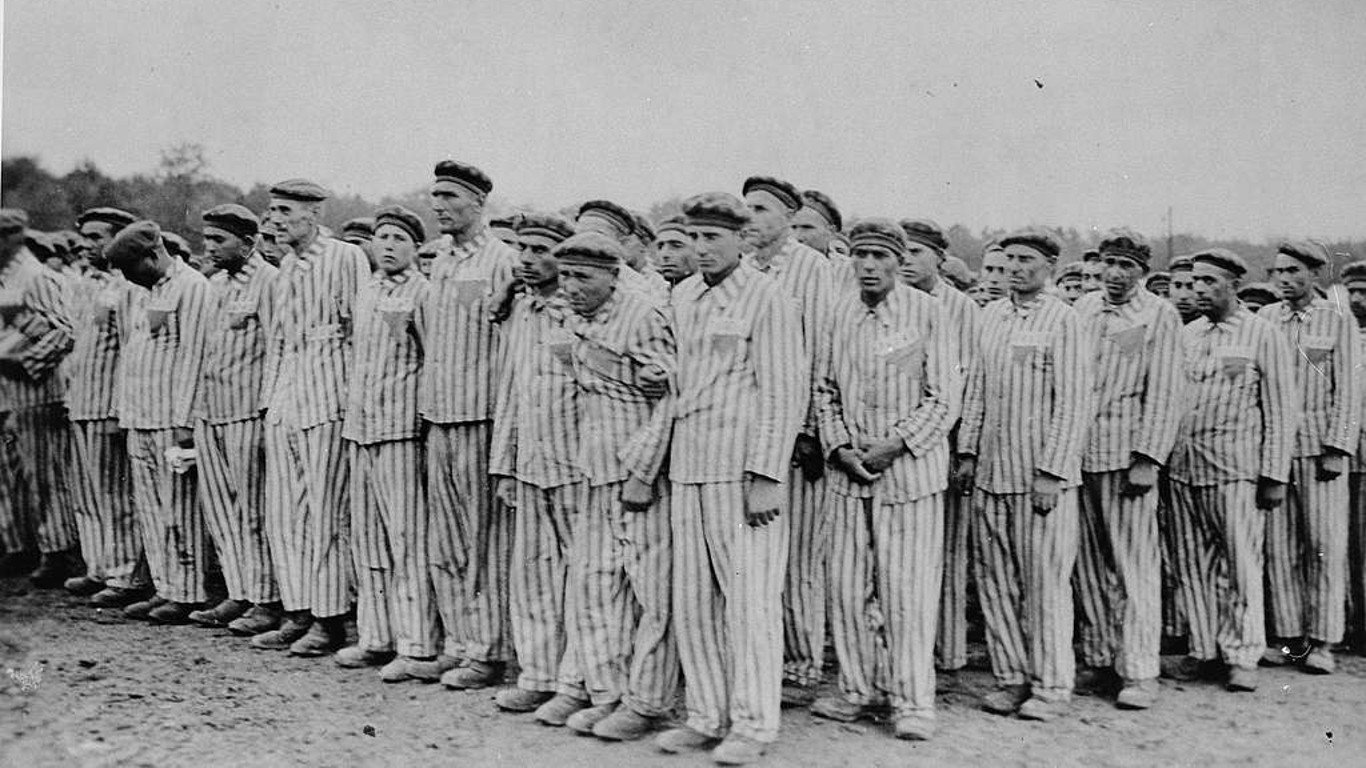
34. Buchenwald roll call 10105
Prisoners at the Buchenwald concentration camp in Germany stand for roll call (refusal to participate was punishable by death).
[in-text-ad-2]
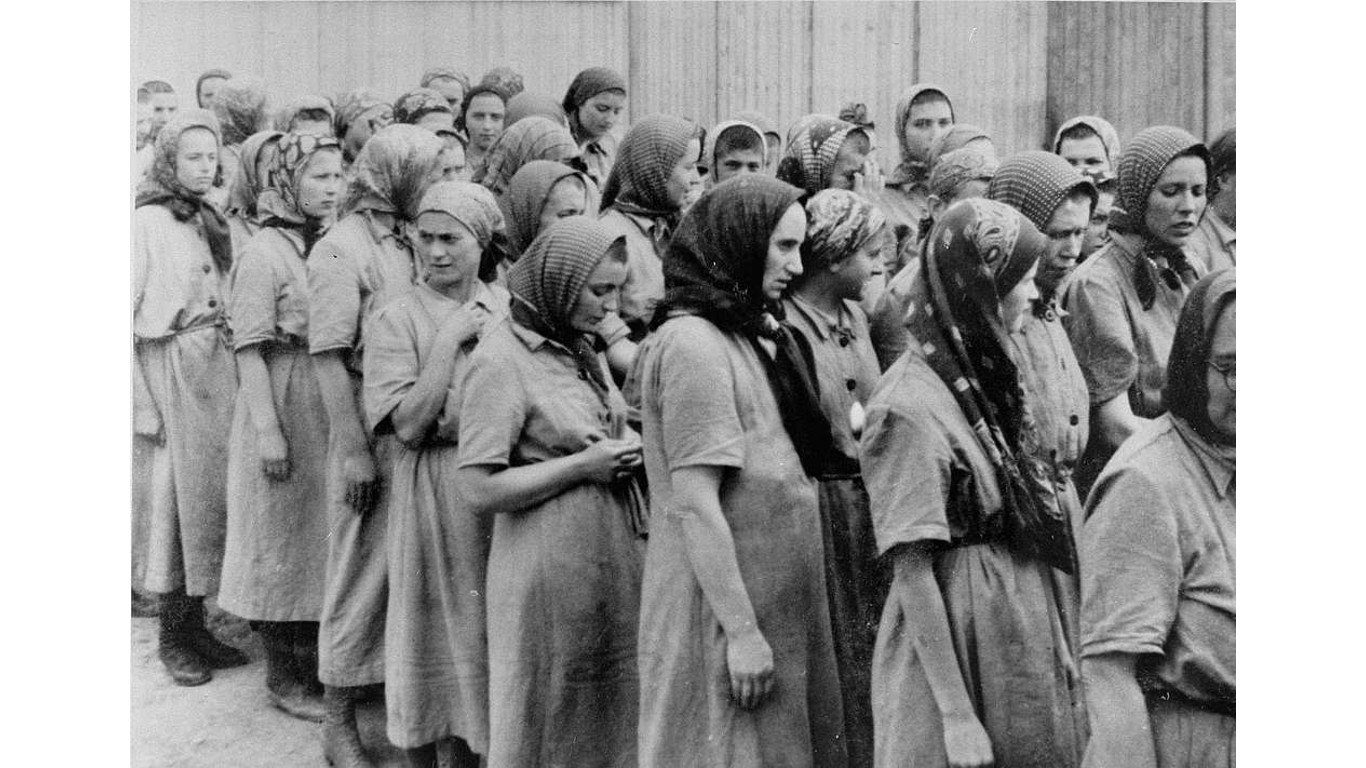
35. Jewish women selected for labor
Jewish women from Subcarpathian Rus in what is now Ukraine, selected for forced labor at Auschwitz II-Birkenau, march towards their barracks after disinfection and head-shaving..
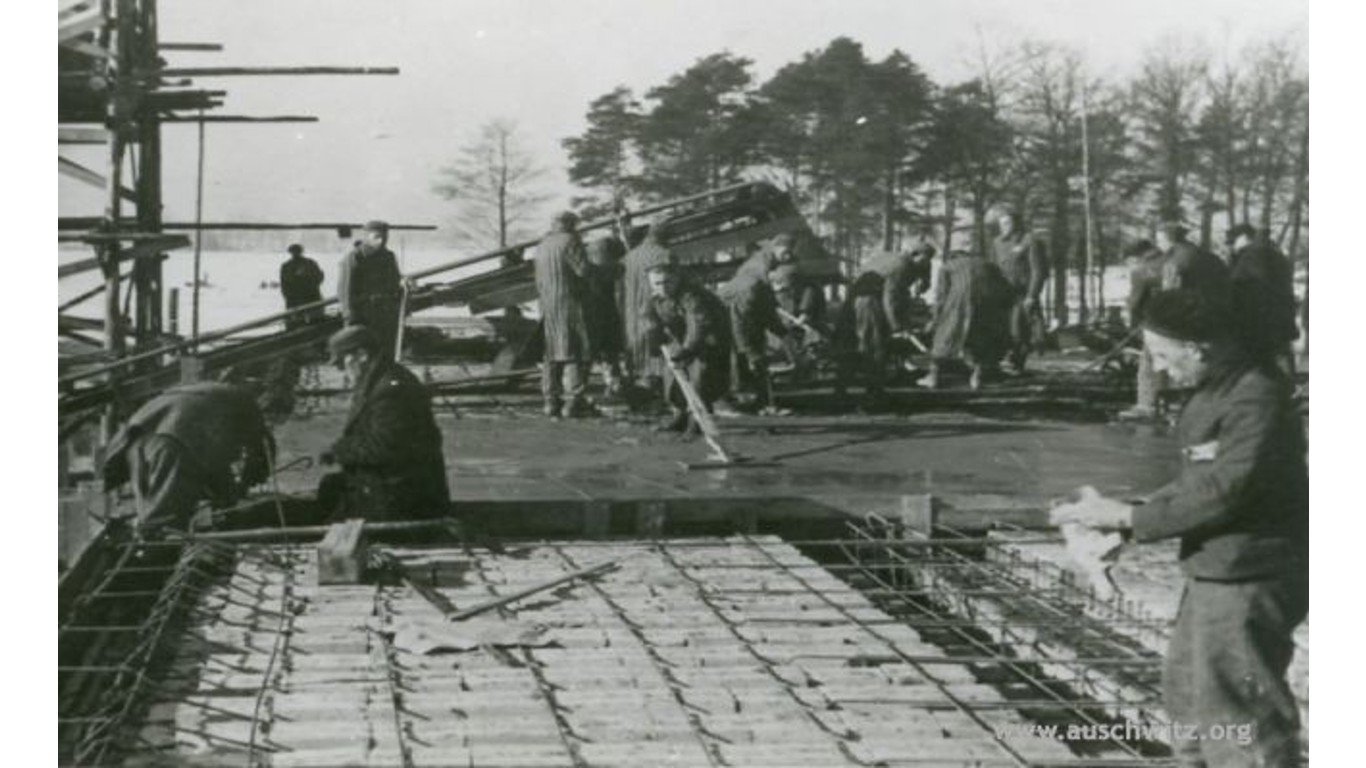
36. Building a gas chamber and crematorium
Jews forced to build a as chamber and crematorium at Auschwitz II-Birkenau in the spring of 1943
[in-text-ad]
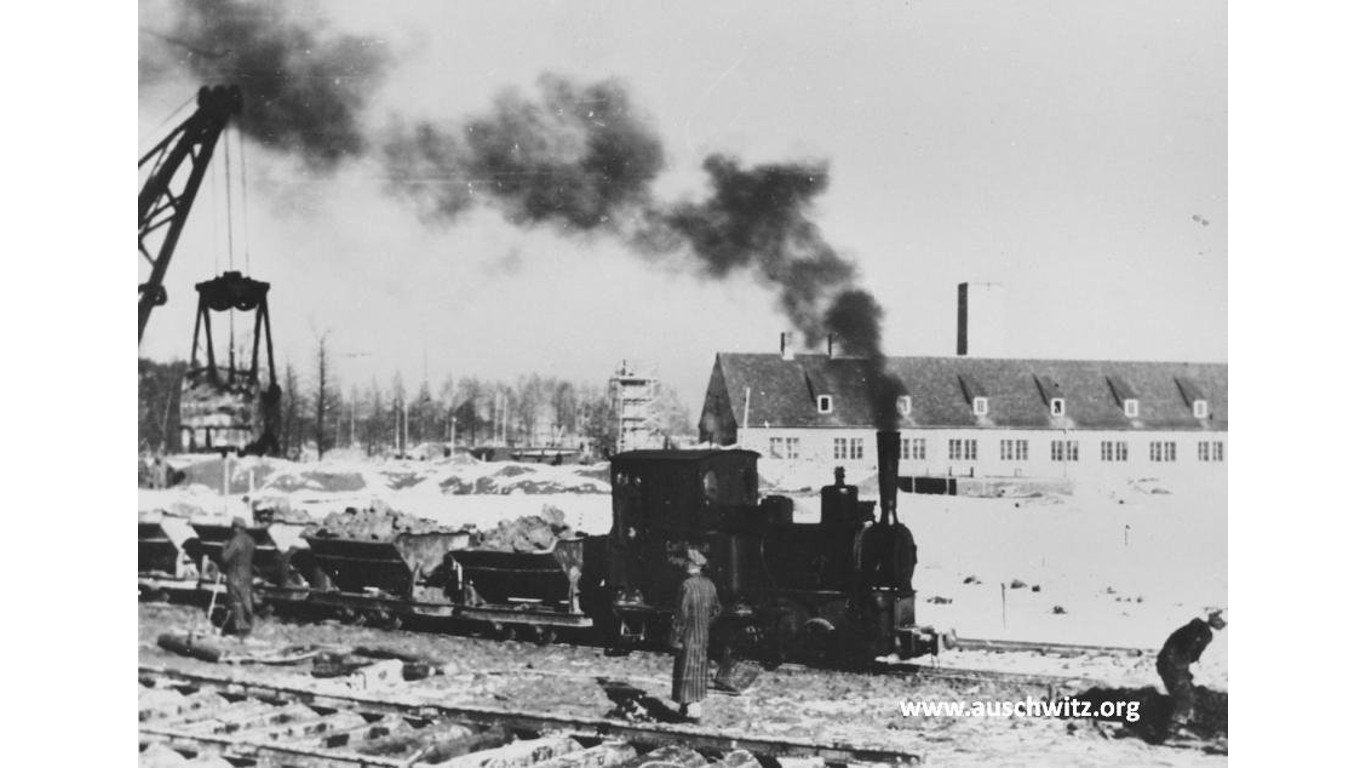
37. Construction completed
A gas chamber and crematorium (where, according to calculations by German authorities, 1,440 corpses could be burned every 24 hours) at Auschwitz II-Birkenau after construction was completed in March of 1943.

38. Roll call after Kristallnacht
Jews imprisoned at Buchenwald after Kristallnacht – the so-called “Night of Broken Glass” in November 1938, during which Nazis and their sympathizers all over Germany and Austria destroyed Jewish businesses and synagogues and arrested some 30,000 Jews for incarceration.
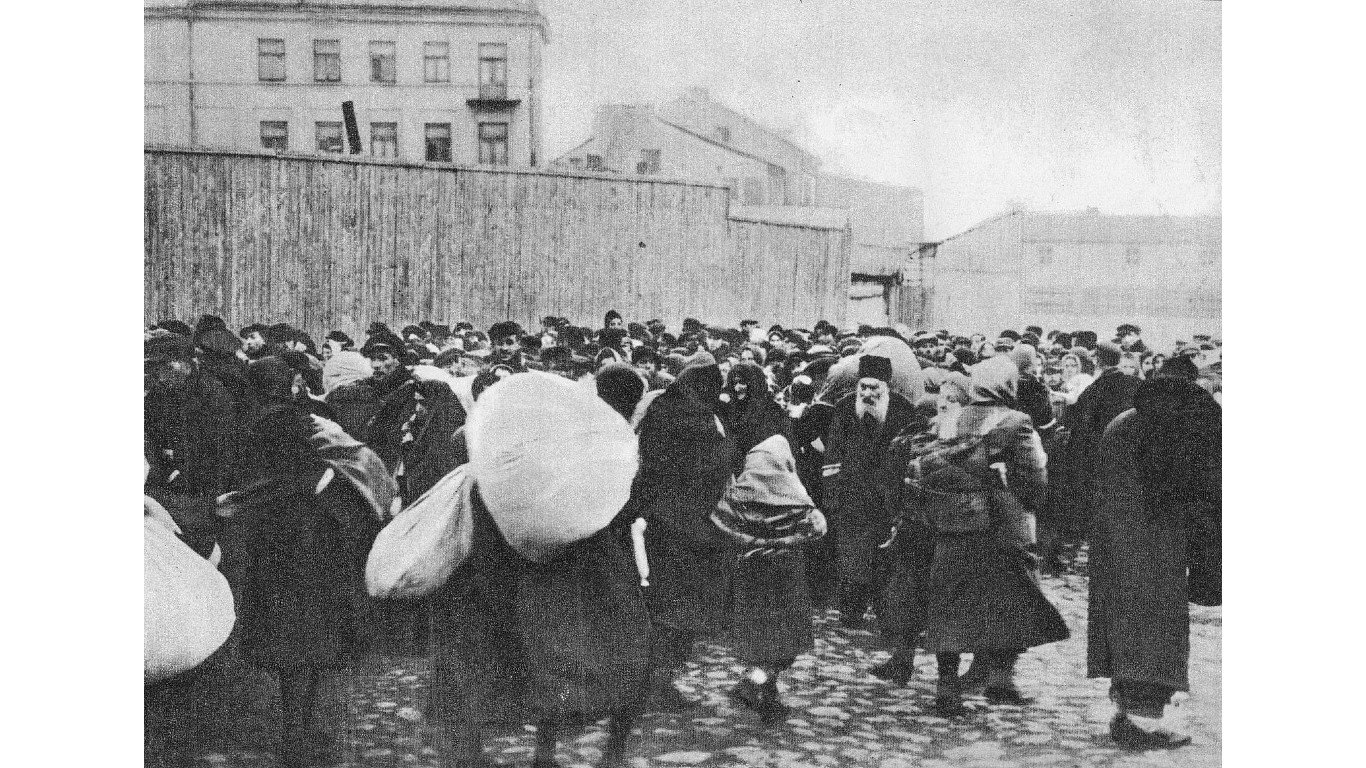
39. Deportation of Jews
Jews from Zamość in southeastern Poland, known for its Hasidic Jewish community, being deported to Bełżec in April 1942.
Sponsored: Want to Retire Early? Here’s a Great First Step
Want retirement to come a few years earlier than you’d planned? Or are you ready to retire now, but want an extra set of eyes on your finances?
Now you can speak with up to 3 financial experts in your area for FREE. By simply clicking here you can begin to match with financial professionals who can help you build your plan to retire early. And the best part? The first conversation with them is free.
Click here to match with up to 3 financial pros who would be excited to help you make financial decisions.
Thank you for reading! Have some feedback for us?
Contact the 24/7 Wall St. editorial team.
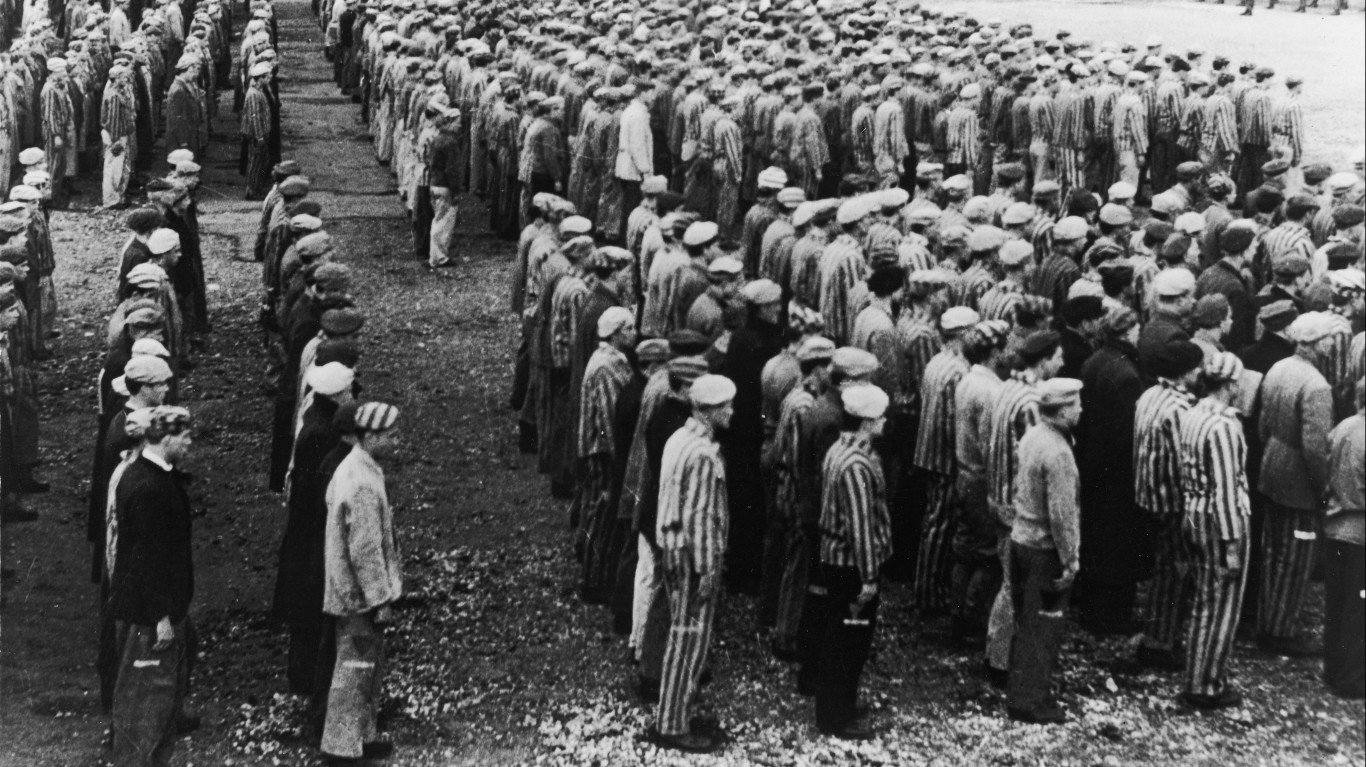 24/7 Wall St.
24/7 Wall St.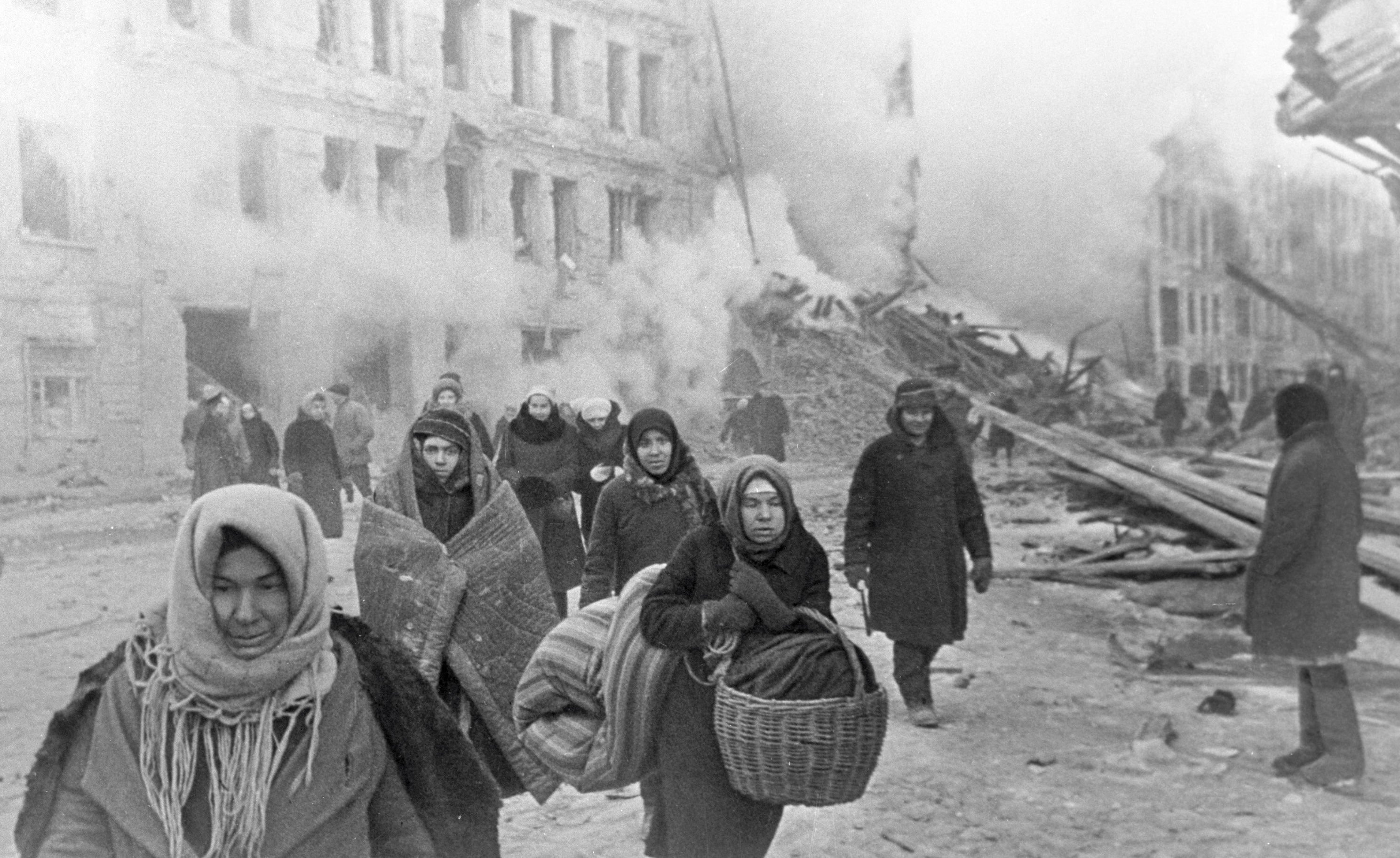 24/7 Wall St.
24/7 Wall St.